Bird call classifiers
Decision table for identifying bird calls
| Bird | Description | Audio |
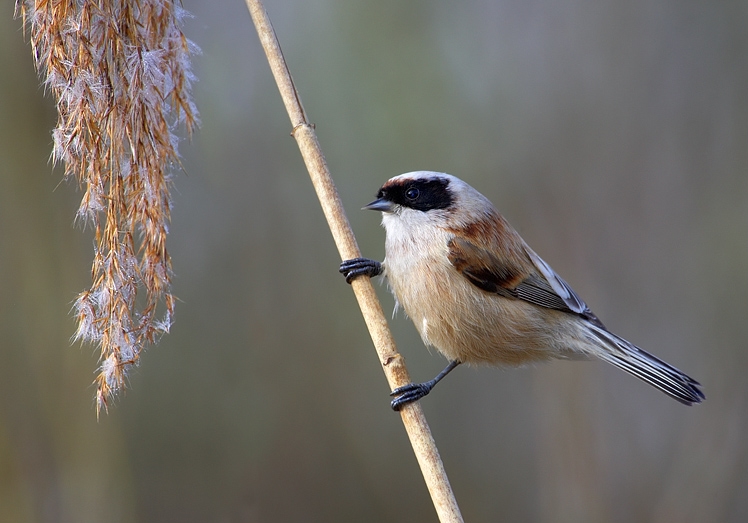 Eurasian penduline-tit ■■
Eurasian penduline-tit ■■ |
.
Automatically generated from Xeno-Canto recording
Call: |
♫

|
 Ortolan bunting ■■
Ortolan bunting ■■ |
.
Automatically generated from Xeno-Canto recording
Call: |
♫

|
 Northern wheatear ■■
Northern wheatear ■■ |
.
Automatically generated from Xeno-Canto recording
Call: | ♫ |
| one note | ||
| rasp | ||
 Spotted nutcracker ■■
Spotted nutcracker ■■ |
rasp one note slow low-high (1-10 KHz) .
- alarm callLike crow or its cousin the Eurasian jay (Eichelhaeher).
Call: | |
 European serin ■■
European serin ■■ |
.
Automatically generated from Xeno-Canto recording
Call: | ♫ |
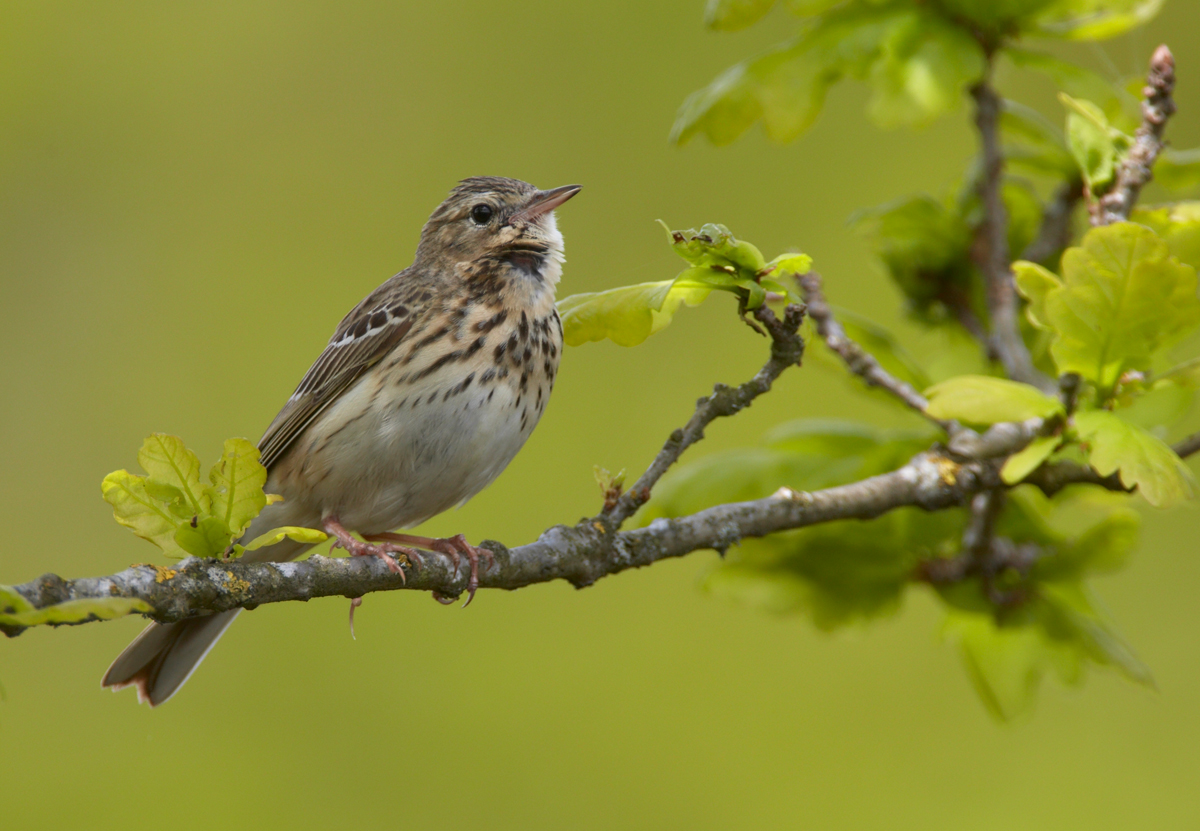 Tree pipit ■■
Tree pipit ■■ |
.
Automatically generated from Xeno-Canto recording
Call: | ♫ |
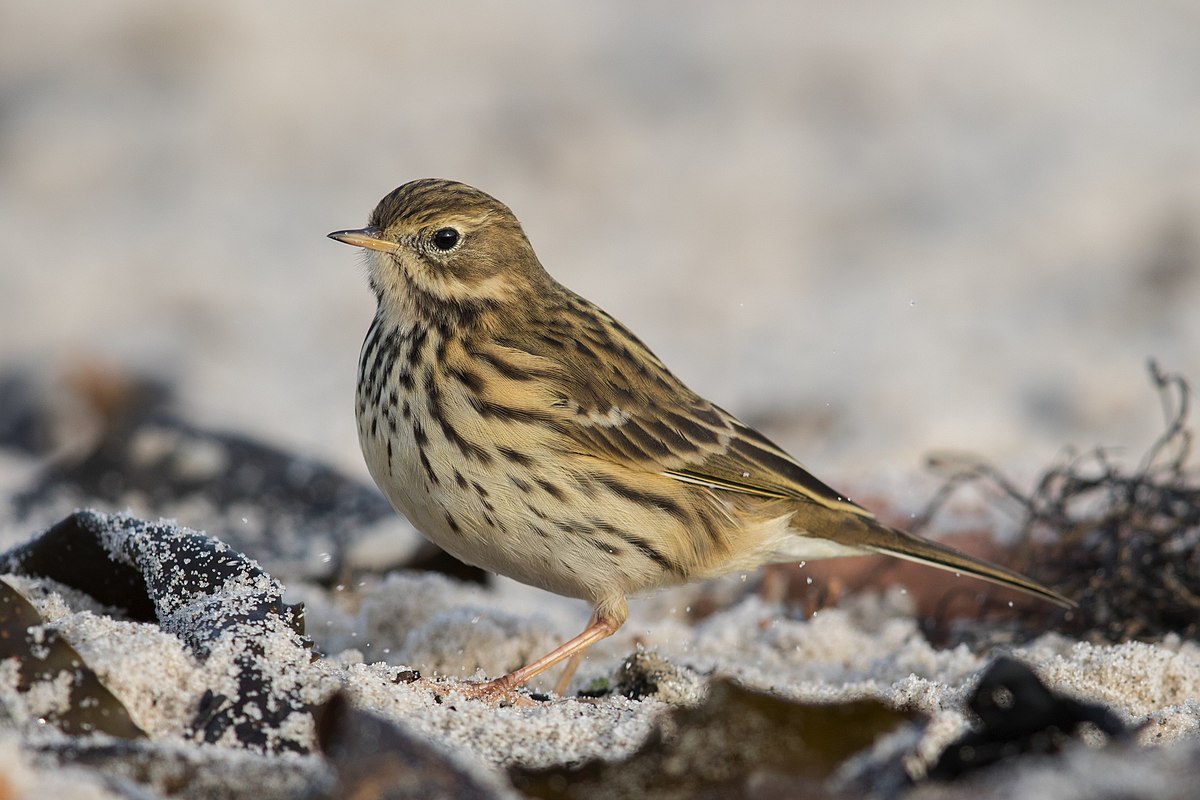 Meadow pipit ■■
Meadow pipit ■■ |
.
Automatically generated from Xeno-Canto recording
Call: | ♫ |
| one note | ||
| whoop, sputter/pebble-clatter | ||
|
|
whoop, sputter/pebble-clatter one note slow medium (4-5 KHz) .
XC560014 matches exactly what BirdID describes: 'Alarm call is a chat-like alternation between short, high-pitched "wit" sounds, and series of hard and dry "teck".' The high-pitched call I heard recently was between 5 and 6 KHz, which could help to distinguish between other birds with a deeper voice. The whooping call is sometimes listed as an alarm call.
Call: |
♫

|
| whoop | ||
|
|
whoop one note slow medium (2-5 KHz) .
- contact callAt least in French, this is called the huit call. Not very consistent in tone from one note to another. Some stick to 3-4 or 3-4.5 KHz, others 2.5-5.5.
Call: |
♫
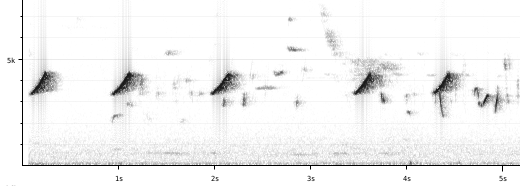
|
| sputter/pebble-clatter | ||
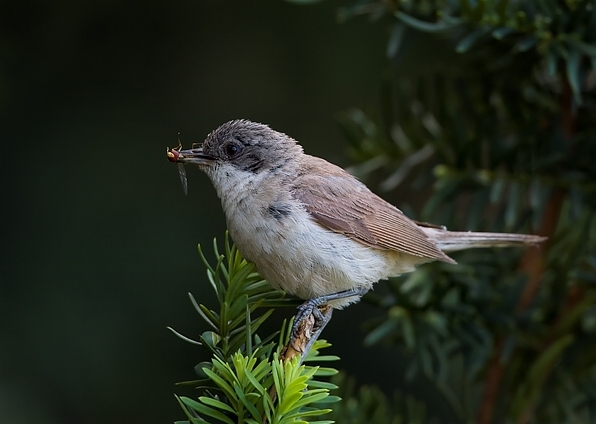 Lesser whitethroat ■■
Lesser whitethroat ■■ |
sputter/pebble-clatter one note slow low-high (2-7 KHz) .
BirdID says: Warning call a hard "check" similar to Blackcap but slightly softer
Call: | ♫ |
|
|
sputter/pebble-clatter one note slow high (3-9 KHz) .
General: Sputtery/stoney, but may have other calls too. Call: |
♫
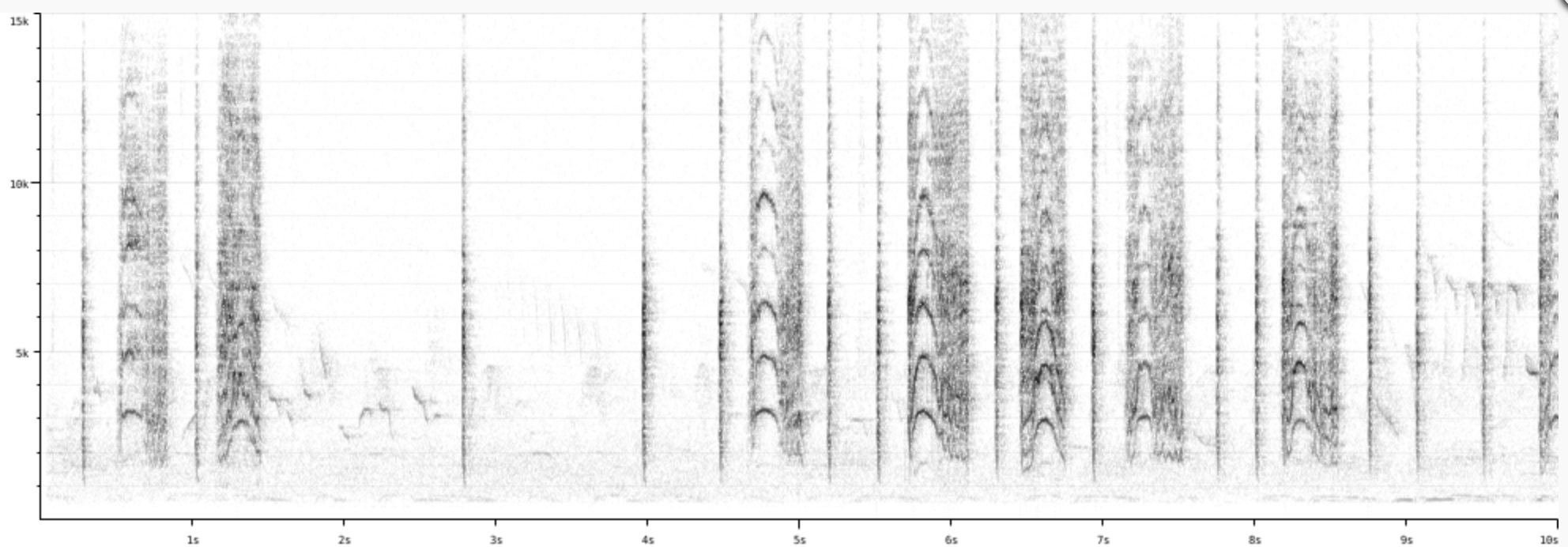
|
|
|
.
Automatically generated from Xeno-Canto recording
Call: | ♫ |
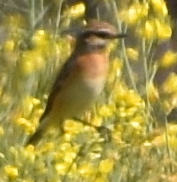 Whinchat ■■
Whinchat ■■ |
.
Automatically generated from Xeno-Canto recording
Call: | ♫ |
| one note | ||
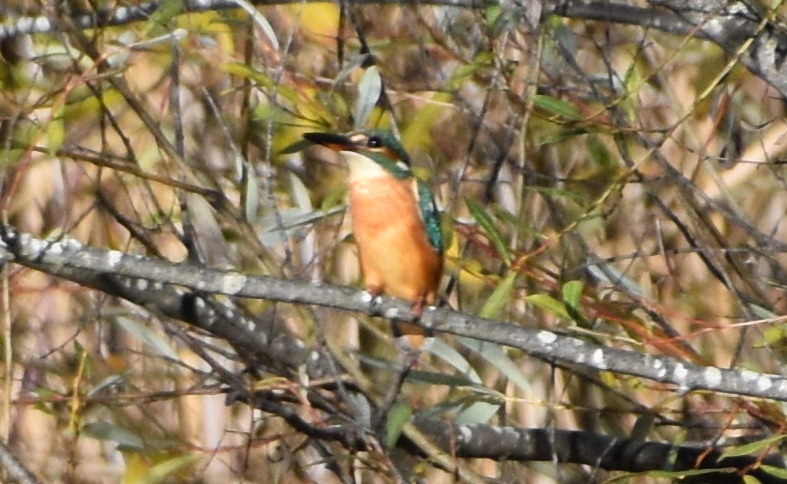 Common kingfisher ■■
Common kingfisher ■■ |
one note slow high (5-7 KHz) .
Common kingfisher call from Xeno-Canto, similar to one from NABU app.
Fairly high pitched single chirps or occasional high-low pairs.
Call: |
♫

|
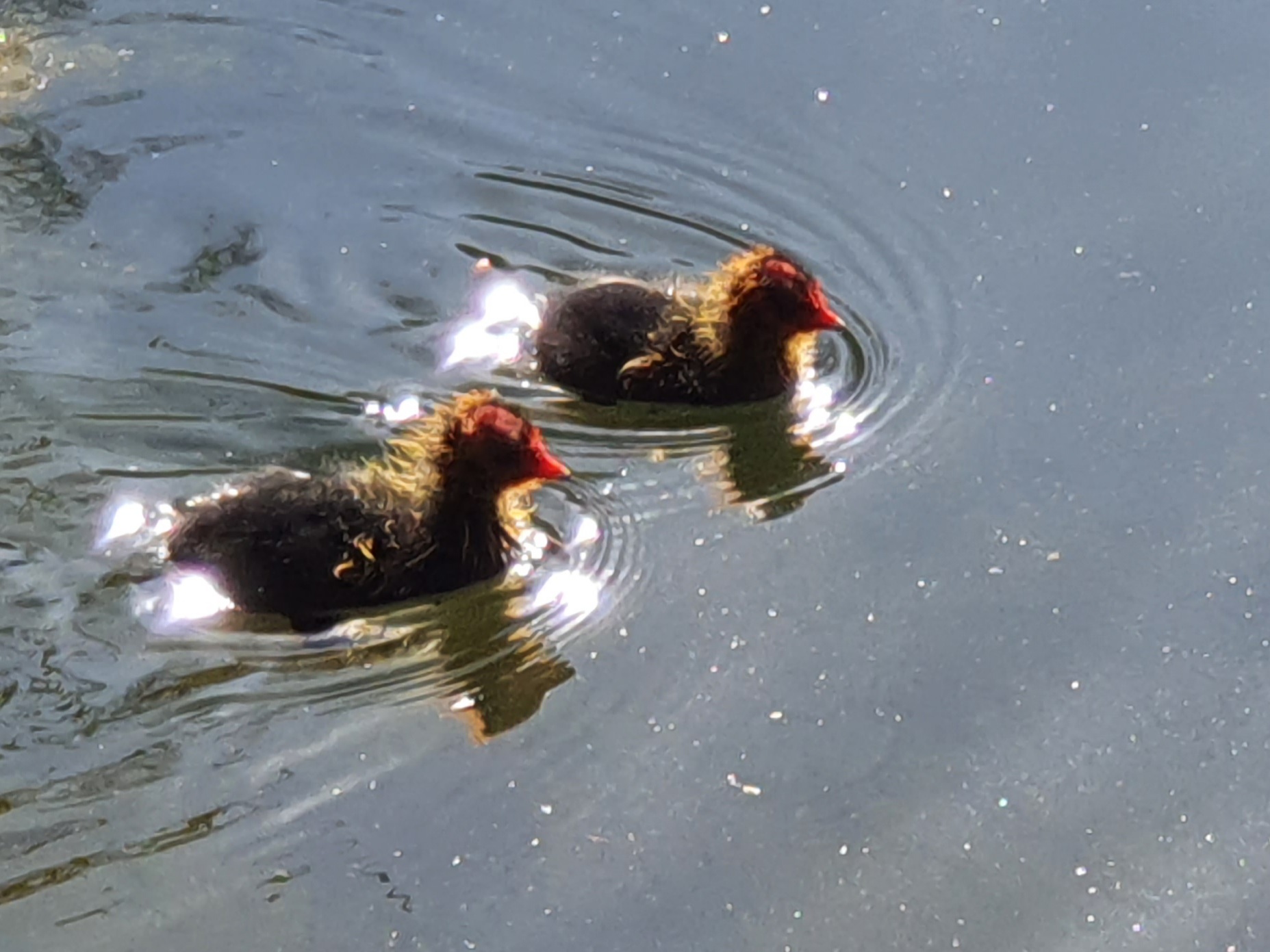 Eurasian coot ■■
Eurasian coot ■■ |
.
Automatically generated from Xeno-Canto recording
Call: | ♫ |
| one note | ||
| rasp, swoop | ||
|
|
rasp, swoop one note slow medium (1-5 KHz) .
Raspy descending note
Call: | ♫ |
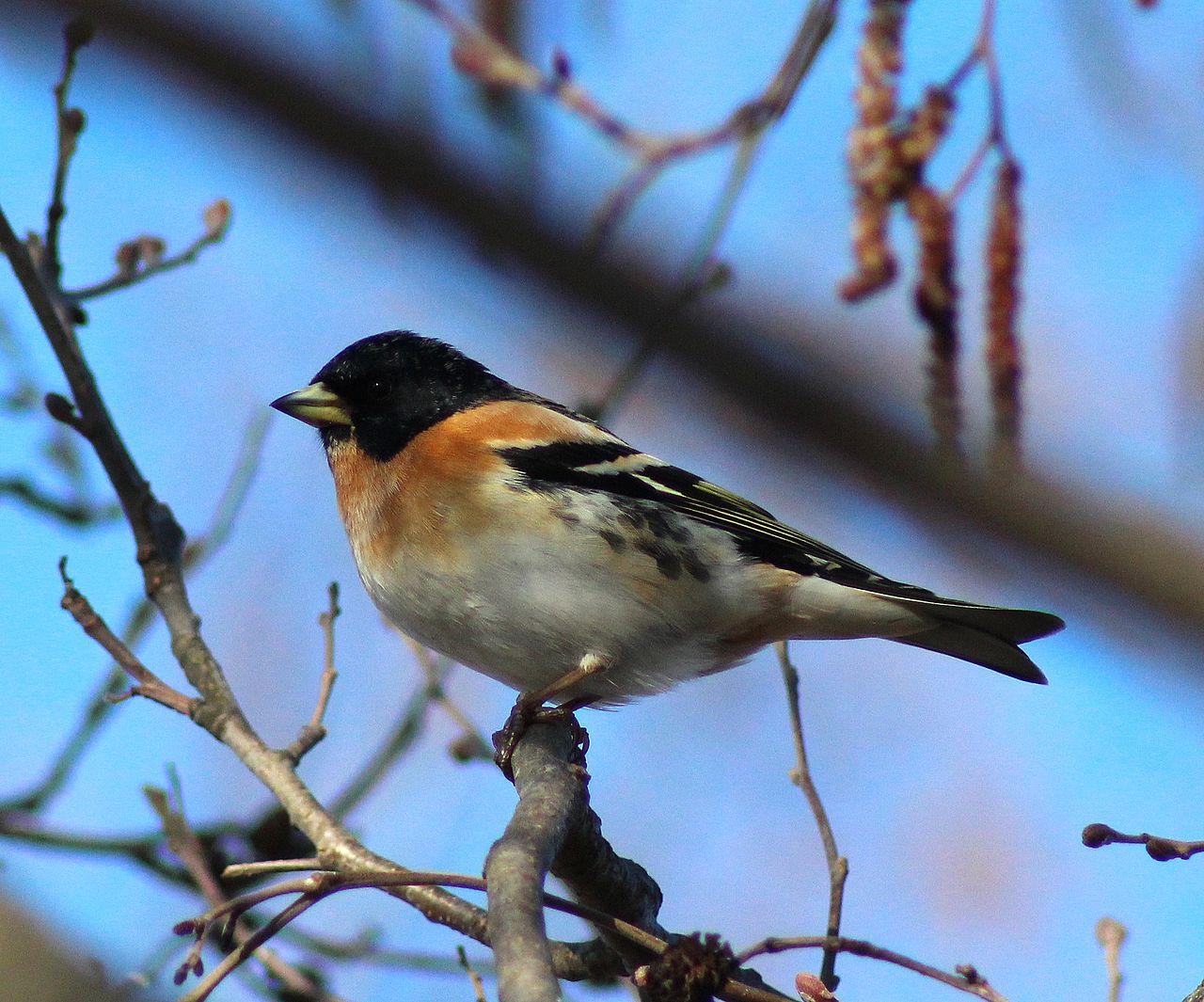 Brambling ■■
Brambling ■■ |
.
Automatically generated from Xeno-Canto recording
Call: |
♫
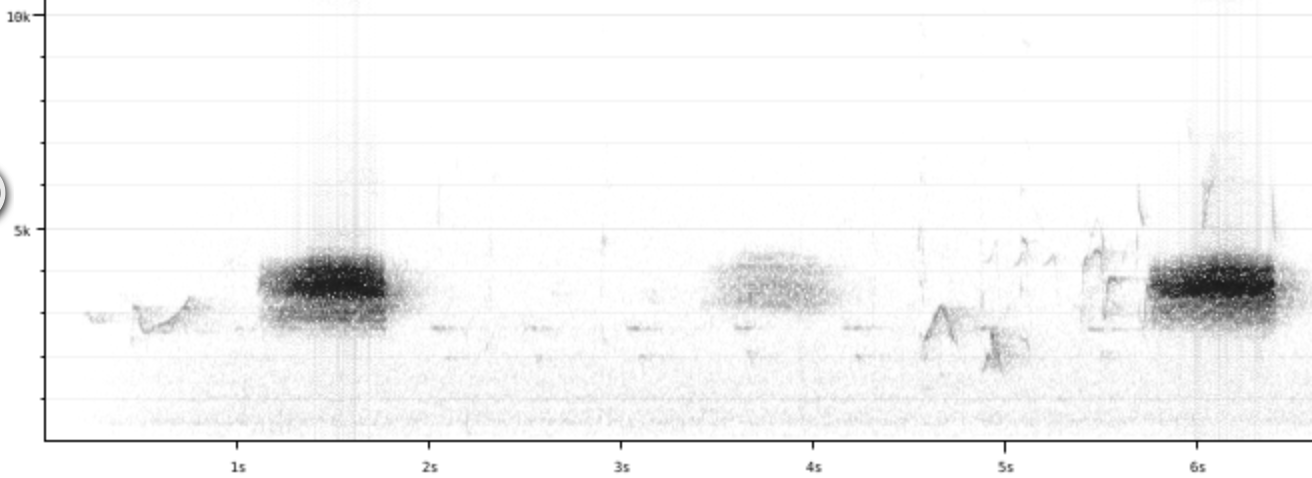
|
| one note | ||
|
|
one note slow high (7-10 KHz) .
- contact callOne or two high chirps followed by long pause of 1-2 seconds
Call: | ♫ |
| non-musical | ||
| rattle | ||
|
|
rattle non-musical fast low-high (2-9 KHz) .
General: I mistook this one for a woodpecker the first time I heard it,
partly because BirdNet also did!
Rattle generated in vocal tract, not with the beak!
Call: | |
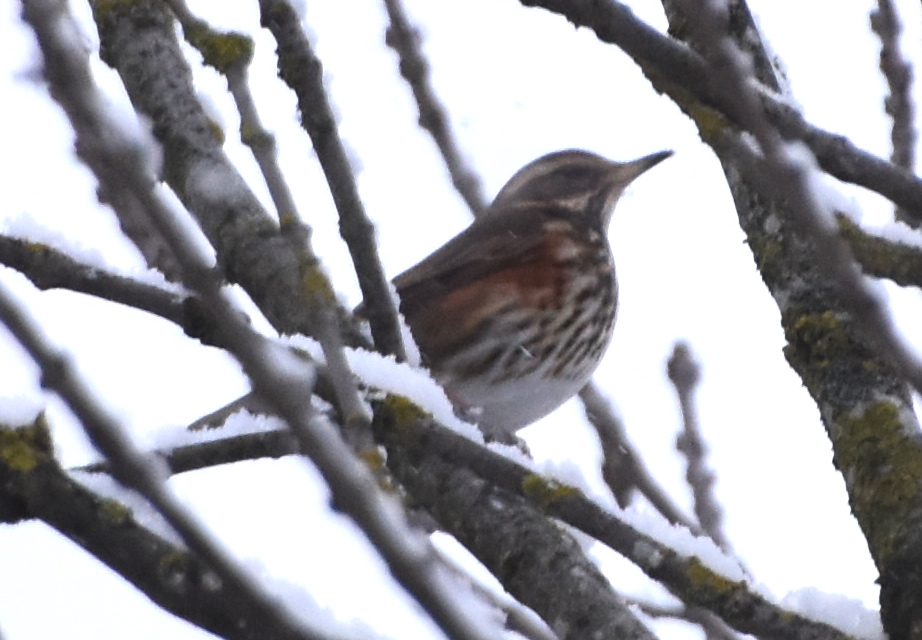 Redwing ■■
Redwing ■■ |
.
Automatically generated from Xeno-Canto recording
Call: |
♫

|
|
|
.
Automatically generated from Xeno-Canto recording
Call: | ♫ |
| simple rhythmic | ||
| weird | ||
|
|
weird simple rhythmic fast low (1-3 KHz) .
Strange tone, Almost barking or a gull cry.
Call: Nabu: Ein hartes „kjack“ oder „schack“ sowie ein raues „tschräh“ hört man am häufigsten von der Dohle. Sie ist ein begabtes Stimmwunder und hat eine Vielzahl von Lauten und Imitationen auf Lager. [Link] |
♫

|
 Bearded reedling ■■
Bearded reedling ■■ |
simple rhythmic fast high (3-7 KHz) .
- songChirping
Call: |
♫

|
 Common whitethroat ■■
Common whitethroat ■■ |
.
Automatically generated from Xeno-Canto recording
Call: | ♫ |
|
|
.
Automatically generated from Xeno-Canto recording
Call: | ♫ |
| one note | ||
 Hawfinch ■■
Hawfinch ■■ |
one note fast high (4-8 KHz) .
Found no references to song
Call: |
♫

|
| non-musical | ||
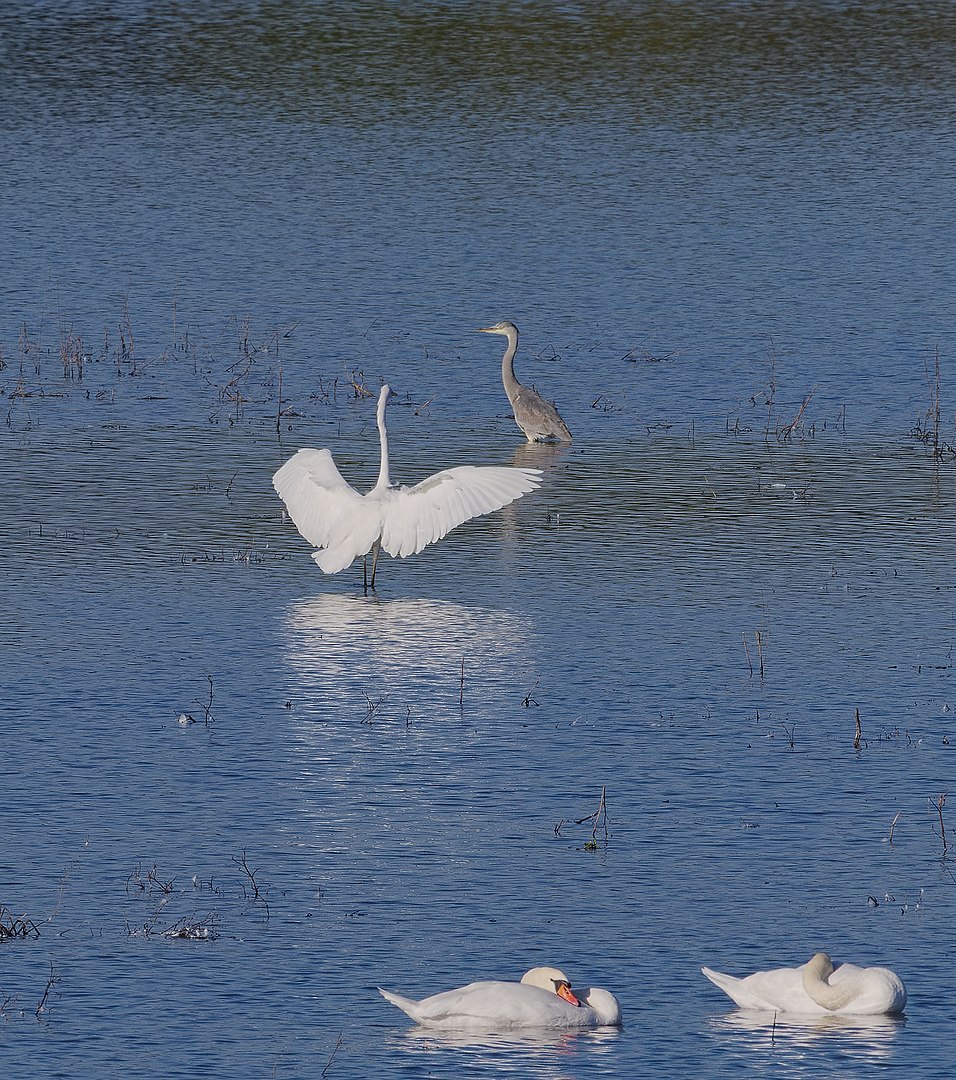 Great egret ■■
Great egret ■■ |
non-musical slow low (1-3 KHz) .
Partly an awkward quack: uck uck. Rattles. Deep-toned urrr. Higher-toned trill.
Call: |
♫
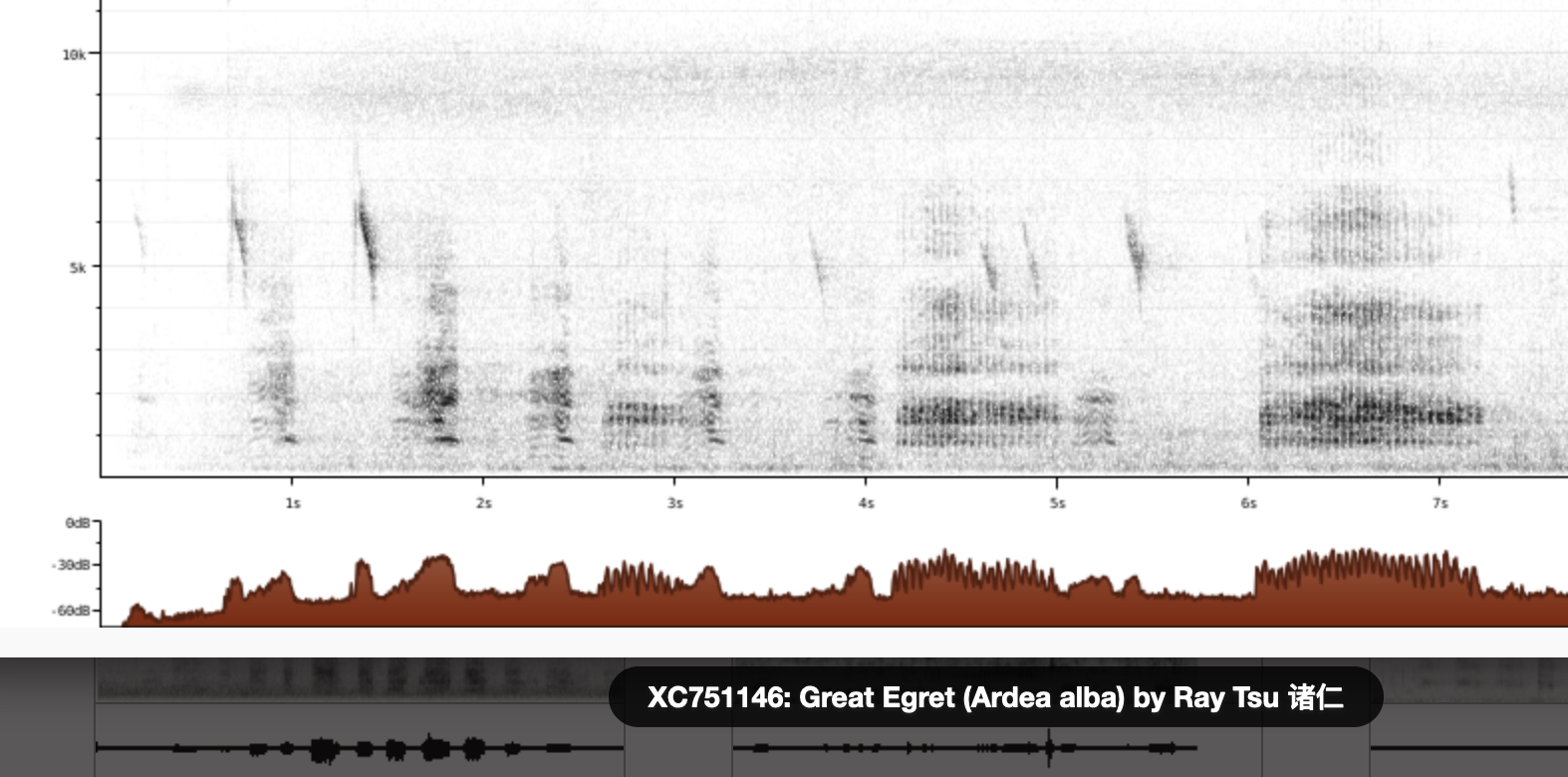
|
|
|
non-musical slow low (1-3 KHz) .
Almost a bark, low-pitched, little treble.
Call: | |
|
|
non-musical slow low (1-3 KHz) .
A little buzz/beep that sounds more like an appliance or app.
Call: | |
|
|
.
Automatically generated from Xeno-Canto recording
Call: | ♫ |
| one note | ||
| swoop | ||
|
|
swoop one note slow high (6-9 KHz) .
Falling note, relatively long, sometimes repeated - like the pee below without the choo?
Call: . [Link] |
♫
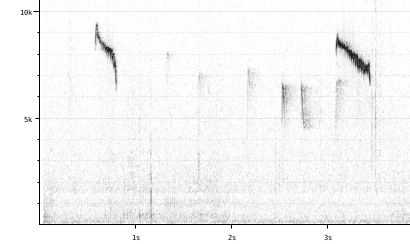
|
|
|
.
Automatically generated from Xeno-Canto recording
Call: | ♫ |
|
|
.
Automatically generated from Xeno-Canto recording
Call: | ♫ |
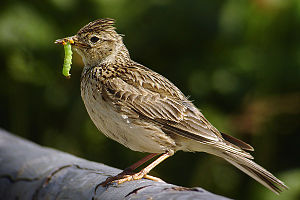 Eurasian skylark ■■
Eurasian skylark ■■ |
.
Automatically generated from Xeno-Canto recording
Call: | ♫ |
| stereotype melodic | ||
|
|
stereotype melodic fast low-high (2-8 KHz) .
|
♫
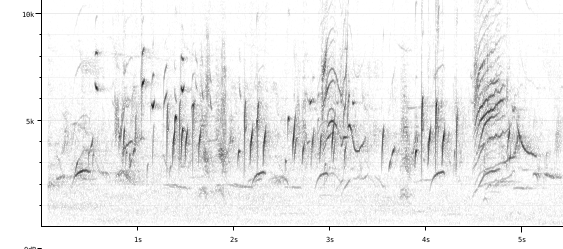
|
 Red crossbill ■■
Red crossbill ■■ |
.
Automatically generated from Xeno-Canto recording
Call: | ♫ |
| simple rhythmic | ||
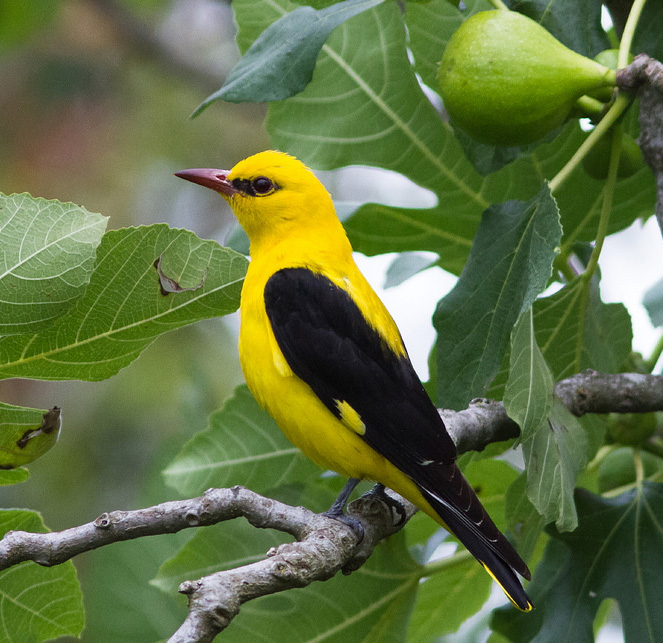 Eurasian golden oriole ■■
Eurasian golden oriole ■■ |
simple rhythmic slow medium (1-5 KHz) .
3 somewhat harsh ascending notes, more melodic than a Eurasian jay call
Call: |
♫

|
|
|
.
Automatically generated from Xeno-Canto recording
Call: | ♫ |
| simple rhythmic | ||
| whoop | ||
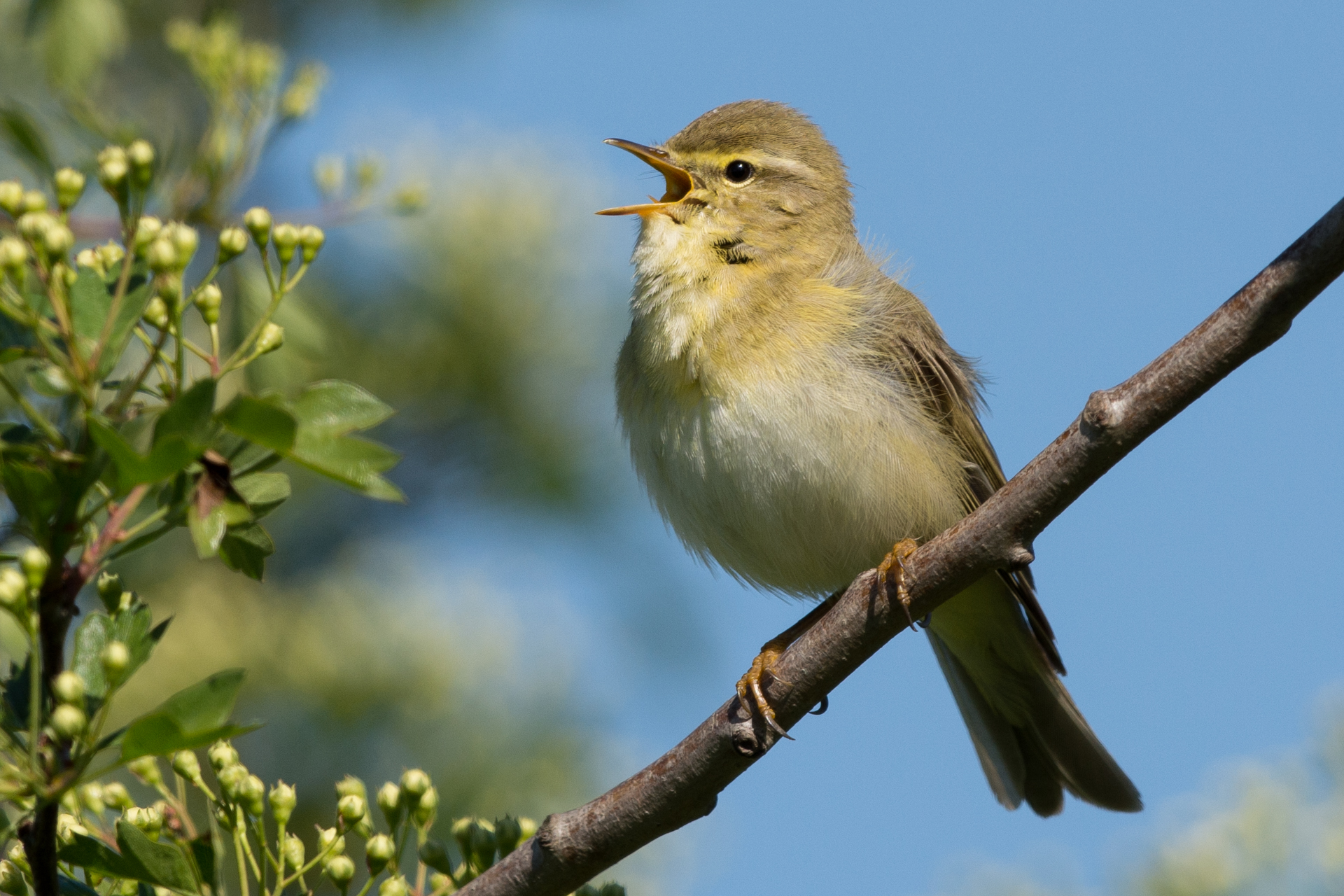 Willow warbler ■■
Willow warbler ■■ |
whoop simple rhythmic slow medium (2-4 KHz) .
- contact callWhoop very similar to chiffchaff, etc. but starts at an even level, then ascends.
Call: |
♫

|
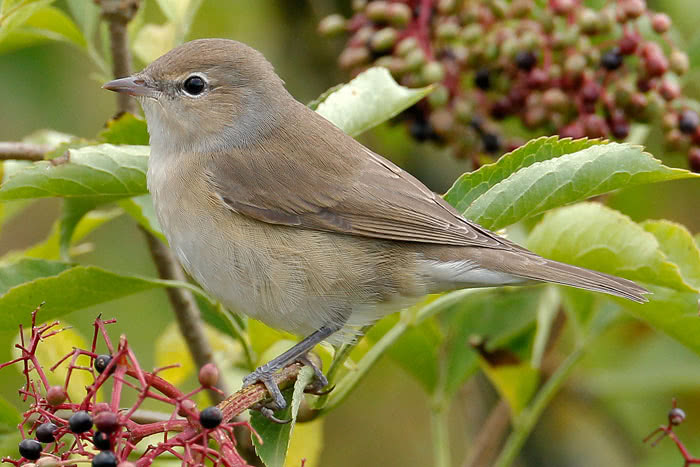 Garden warbler ■■
Garden warbler ■■ |
.
Automatically generated from Xeno-Canto recording
Call: | ♫ |
|
|
.
Automatically generated from Xeno-Canto recording
Call: | ♫ |
|
|
.
Automatically generated from Xeno-Canto recording
Call: | ♫ |
|
|
.
Automatically generated from Xeno-Canto recording
Call: | ♫ |
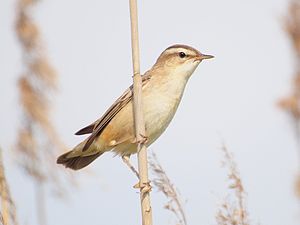 Sedge warbler ■■
Sedge warbler ■■ |
.
Automatically generated from Xeno-Canto recording
Call: | ♫ |
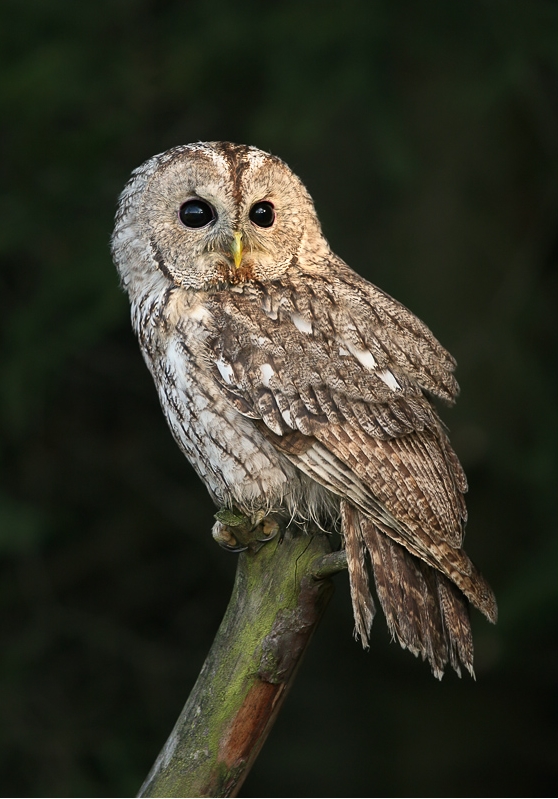 Tawny owl ■■
Tawny owl ■■ |
.
Automatically generated from Xeno-Canto recording
Call: | ♫ |
|
|
.
Automatically generated from Xeno-Canto recording
Call: | ♫ |
|
|
.
Automatically generated from Xeno-Canto recording
Call: | ♫ |
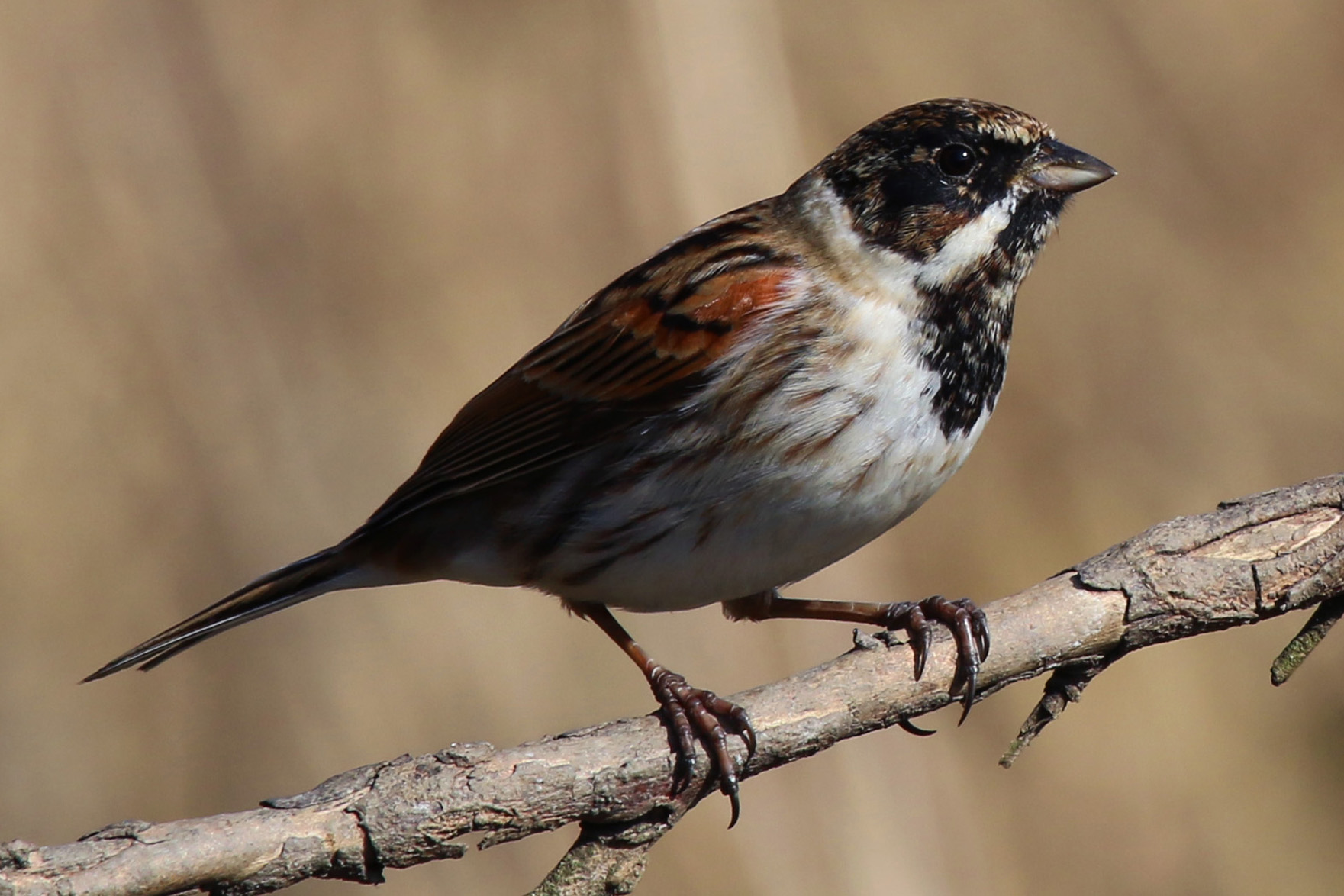 Common reed bunting ■■
Common reed bunting ■■ |
.
Automatically generated from Xeno-Canto recording
Call: | ♫ |
|
|
.
Automatically generated from Xeno-Canto recording
Call: | ♫ |
| Common tern ■■ |
.
Automatically generated from Xeno-Canto recording
Call: | ♫ |
|
|
.
Automatically generated from Xeno-Canto recording
Call: | ♫ |
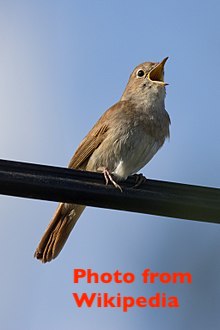 Common nightingale ■■
Common nightingale ■■ |
.
Automatically generated from Xeno-Canto recording
Call: | ♫ |
| simple rhythmic | ||
|
|
simple rhythmic slow high (3-9 KHz) .
Analyze stuff at XC vs my BirdNet 962 - several notes, not sure if all coal tit as BirdNet suggested. XC has two-note high-low alarm call but simple song-like calls too
Call: | ♫ |
| one note | ||
|
|
one note slow high (5-7 KHz) .
General: See the sonogram how the song may descend rapidly from 7Khz to and then climb from 5 to 5.75 KHz, a kind of reversed checkmark. However I find it hard to distinguish from a single note. I'm not a bird ;-( Call: |
♫
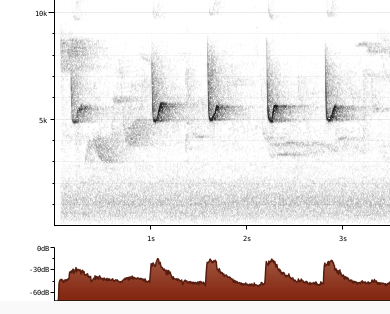
|
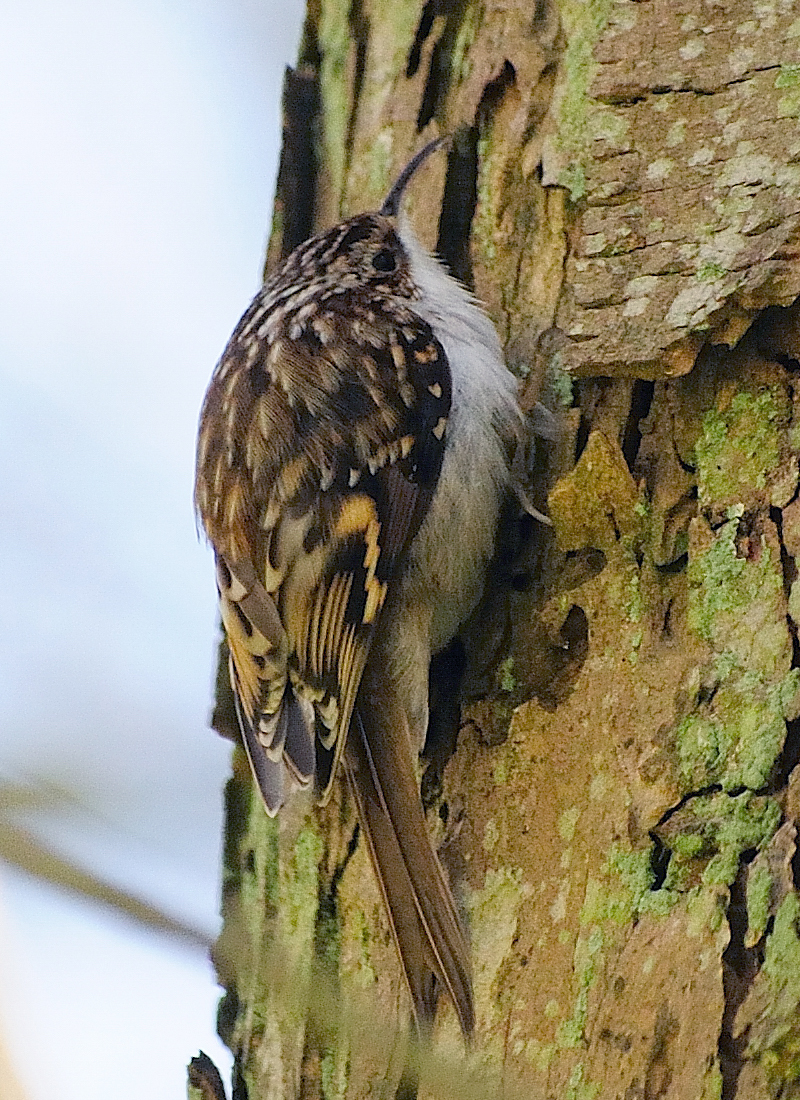 Eurasian treecreeper ■■
Eurasian treecreeper ■■ |
one note slow high (7-9 KHz) .
General: Wikipedia says: The contact call is a very quiet, thin and high-pitched sit, but the most distinctive call is a penetrating tsree, with a vibrato quality, sometimes repeated as a series of notes. Fairly regularly spaced single tseep at 7-9KHz. Call: |
♫
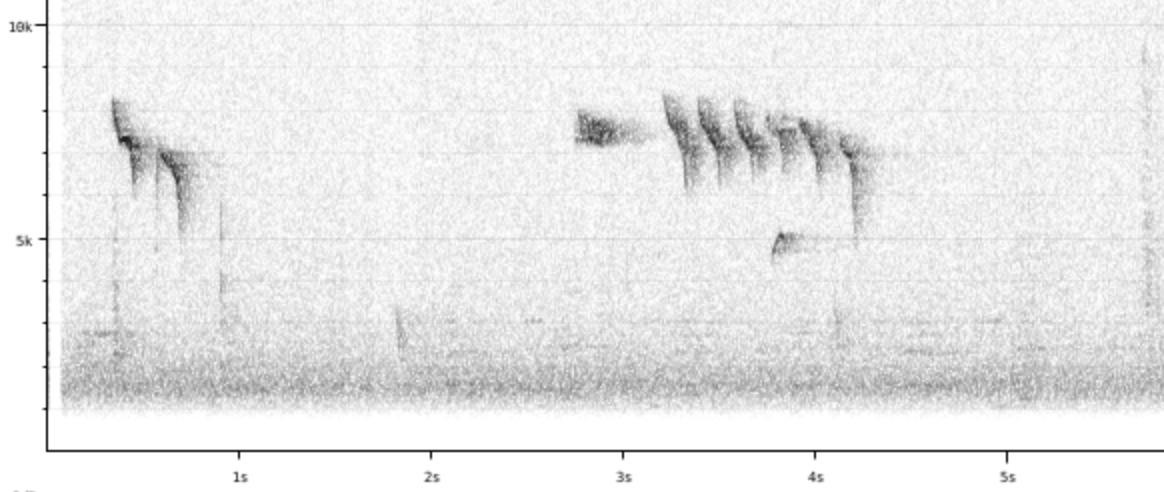
|
| sputter/pebble-clatter | ||
|
|
sputter/pebble-clatter one note slow high (3-8 KHz) .
Sputtery/drippy/trilly repeated notes at 3-8 KHz. June 2022 heard check calls that were distinctly irregularly in their rhythm.
Call: | ♫ |
|
|
one note slow low-high (1-8 KHz) .
General: A chirping (that I couldn't associate in my mind with a woodpecker), repeated at somewhat irregular intervals of about a second 2023: klang in bird-song.ch Quiz wie eine lauter Haussperling Call: Nabu: Der häufigste Ruf ist ein kurzes und spitzes „kix“. Ist ein Buntspecht aufgebracht, etwa durch einen Artgenossen, kann man ein schnelles Schnarren hören. [Link] Call: |
♫
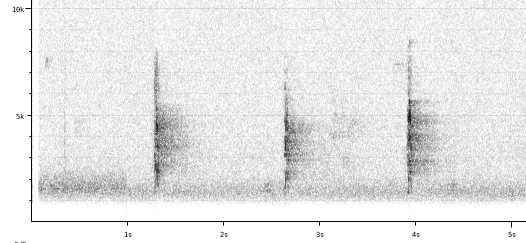
|
| simple rhythmic | ||
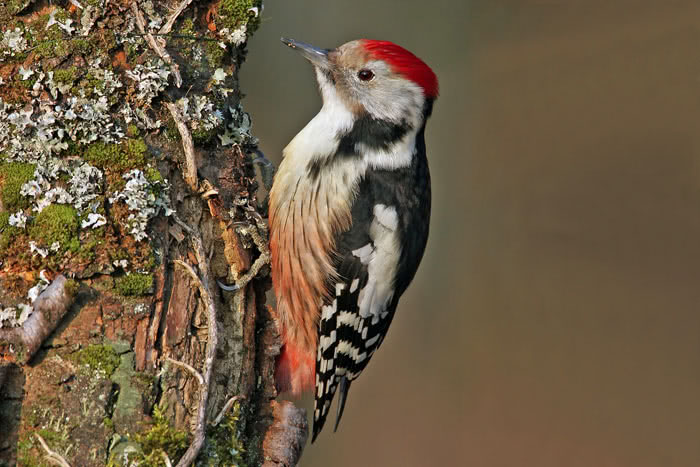 Middle spotted woodpecker ■■
Middle spotted woodpecker ■■ |
simple rhythmic slow medium (0-4 KHz) .
|
♫
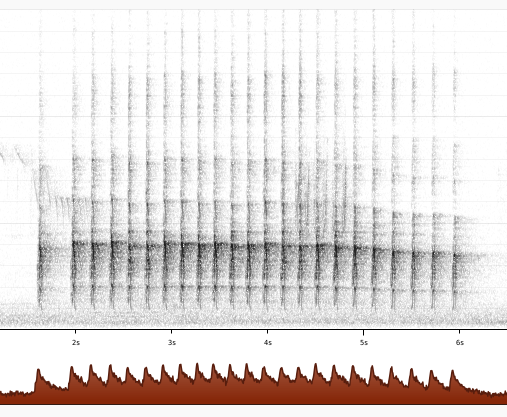
|
| one note | ||
 Black woodpecker ■■
Black woodpecker ■■ |
one note slow low-high (1-8 KHz) .
General: A loud unearthly call on a single unwavering note.
Call: Flight call a characteristic resonant trill "krrreekrrreekrrreekrrree". A characteristic short, sharp and plaintive "keeaaa" with descending pitch often uttered when excited. A few slower drawn-out introductory calls before the phrase gets going is diagnostic. [Link] |
♫
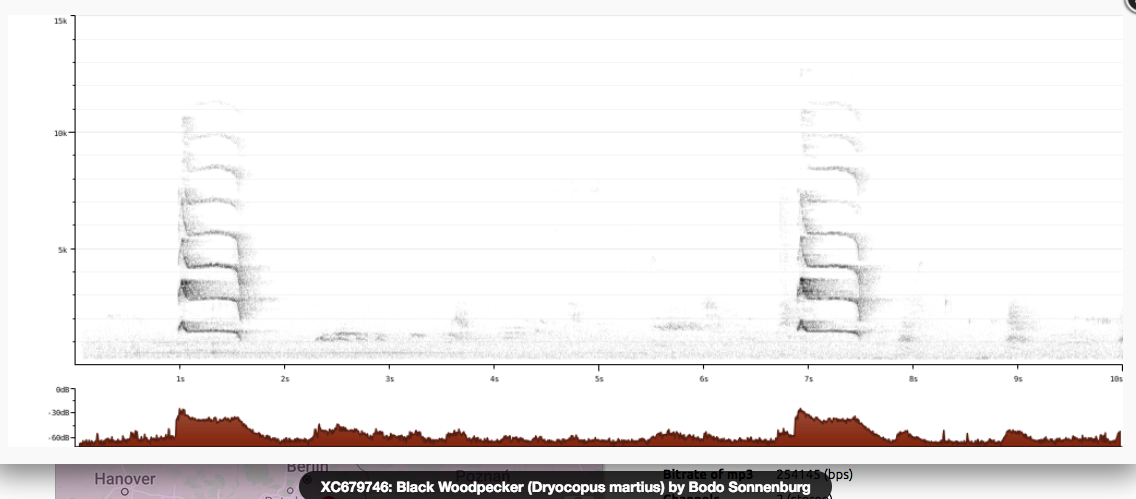
|
| simple rhythmic | ||
|
|
simple rhythmic fast high (3-9 KHz) .
Vogelwarte wie oben..hohe Rufreihen
Call: |
♫
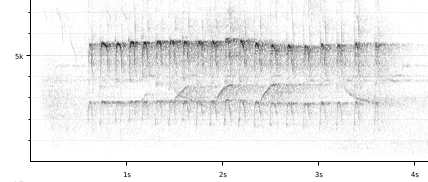
|
| Eurasian green woodpecker ■■ |
simple rhythmic slow high (3-9 KHz) .
Hysterical laughter. 7-8 loud urgent slightly falling notes, reminding me of George of the Jungle's dooky dooky bird for some reason.
Call: |
♫
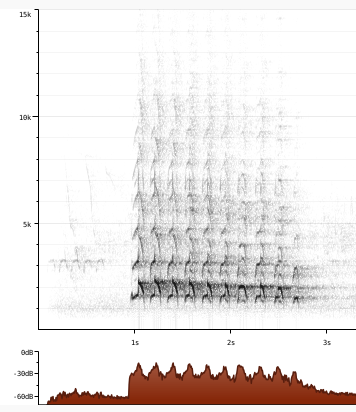
|
| one note | ||
| rasp | ||
|
|
rasp one note slow medium (1-5 KHz) .
Typically harsh jay call. I would say a contact call usually means 'Here I am', answered by 'Good, here I am.' Listening to two jays in the Swiss mountains of Toggenburg, it sounded like 'HEY IDIOT, HERE I AM...WHERE THE HECK ARE YOU?' 'WHAT? YOU HAVEN'T FIGURE IT OUT? OF COURSE I'M OVER HERE. PEABRAIN.' On the other hand, anthropomorphism is always dangerous, usually completely wrong approach.
Call: | ♫ |
|
|
.
Automatically generated from Xeno-Canto recording
Call: | ♫ |
| simple rhythmic | ||
|
|
simple rhythmic slow high (3-9 KHz) .
Low-high-high, with lightly raspy start, rather high.
Call: | ♫ |
 Common blackbird ■■
Common blackbird ■■ |
simple rhythmic slow medium (1-5 KHz) .
- alarm callLoud falling series of notes, unlike anything else you hear from a blackbird
Call: |
♫
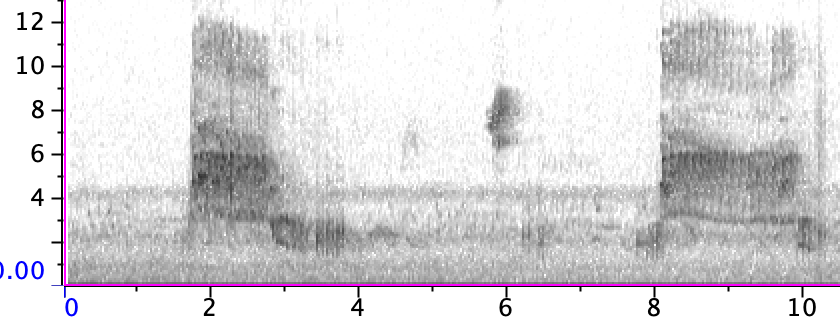
|
|
|
.
Automatically generated from Xeno-Canto recording
Call: | ♫ |
| non-musical | ||
| cawing | ||
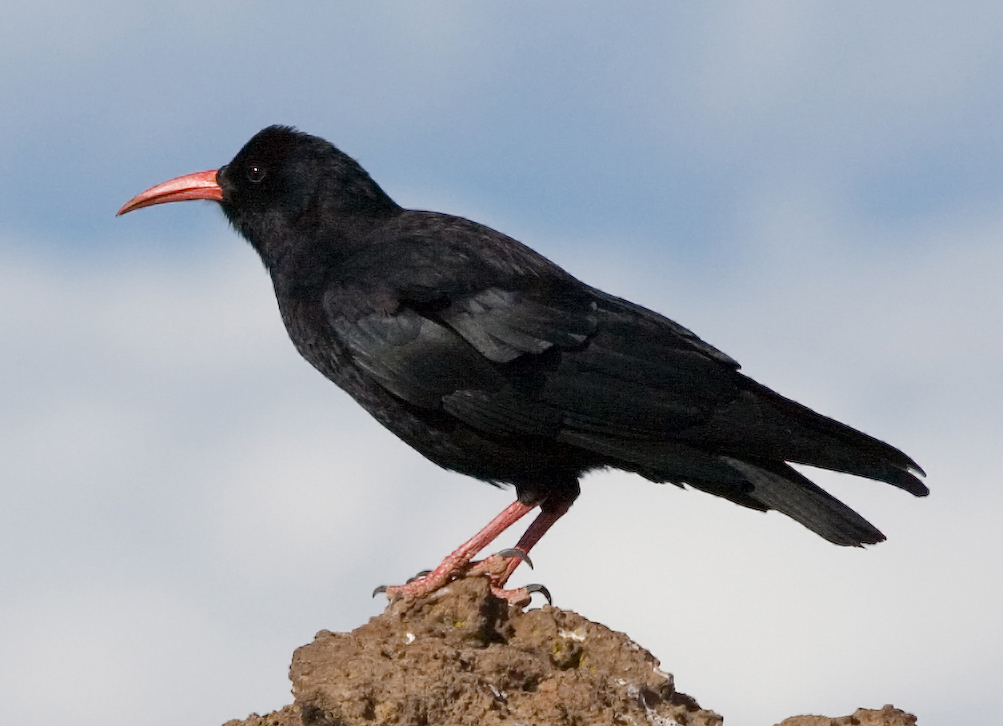 Red-billed chough ■■
Red-billed chough ■■ | cawing non-musical slow low (1-3 KHz) . Higher-pitched falling graak. Call: Ebird: Gives a variety of calls, including a loud “chaw!”, as well as higher-pitched gull-like mewing calls. [Link] |
♫

|
 Bohemian waxwing ❑❑
Bohemian waxwing ❑❑ |
.
Automatically generated from Xeno-Canto recording
Call: |
♫

|
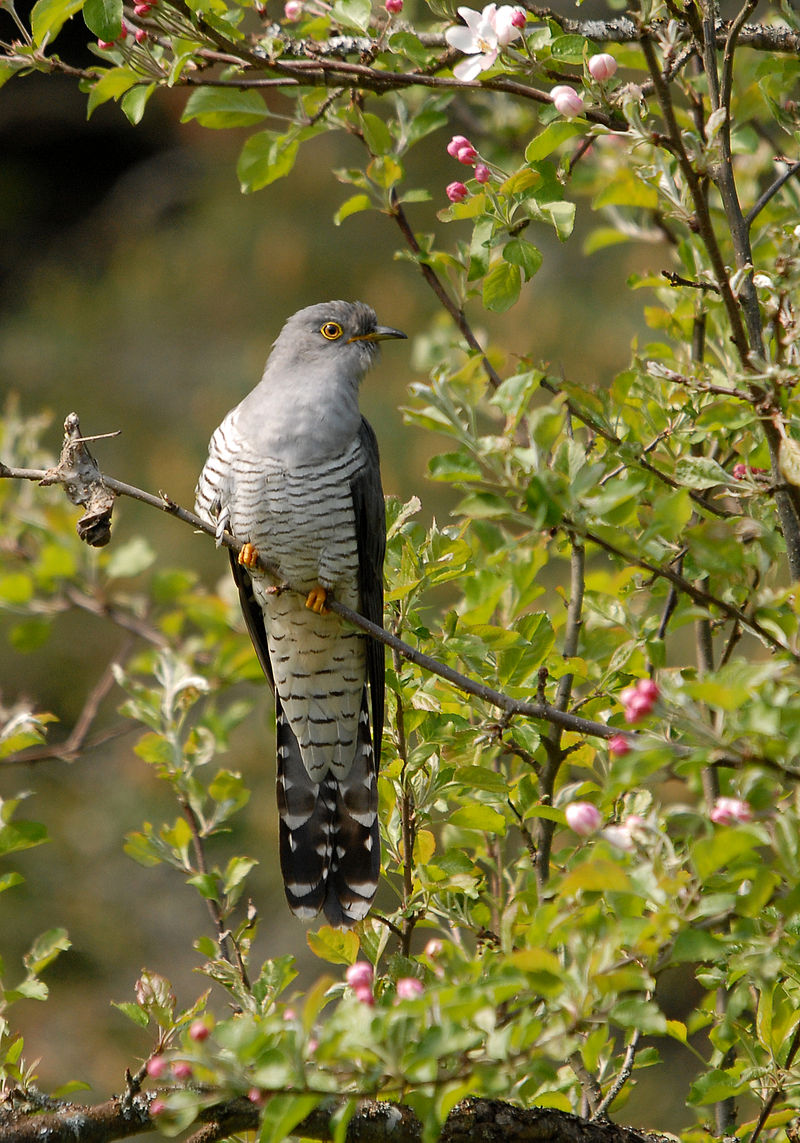 Common cuckoo ■■
Common cuckoo ■■ |
.
Automatically generated from Xeno-Canto recording
Call: |
♫
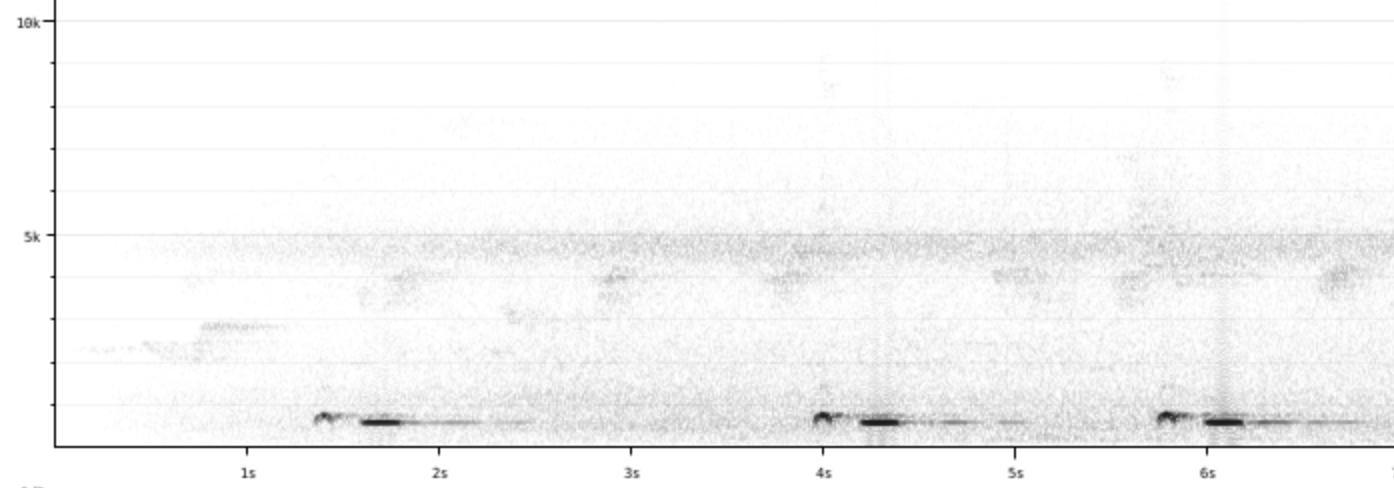
|
| non-musical | ||
| cawing | ||
 Hooded crow ■■
Hooded crow ■■ |
cawing non-musical slow medium (2-4 KHz) .
| |
| one note | ||
| whoop | ||
|
|
whoop one note slow medium (1-6 KHz) .
I hear this occasionally and really enjoy it - a long rising 'whoop', as I call it', starting low at 1 1/2 KHz and rising to 6 1/2 KHz!
Call: | ♫ |
|
|
.
Automatically generated from Xeno-Canto recording
Call: | ♫ |
|
|
.
Automatically generated from Xeno-Canto recording
Call: | ♫ |
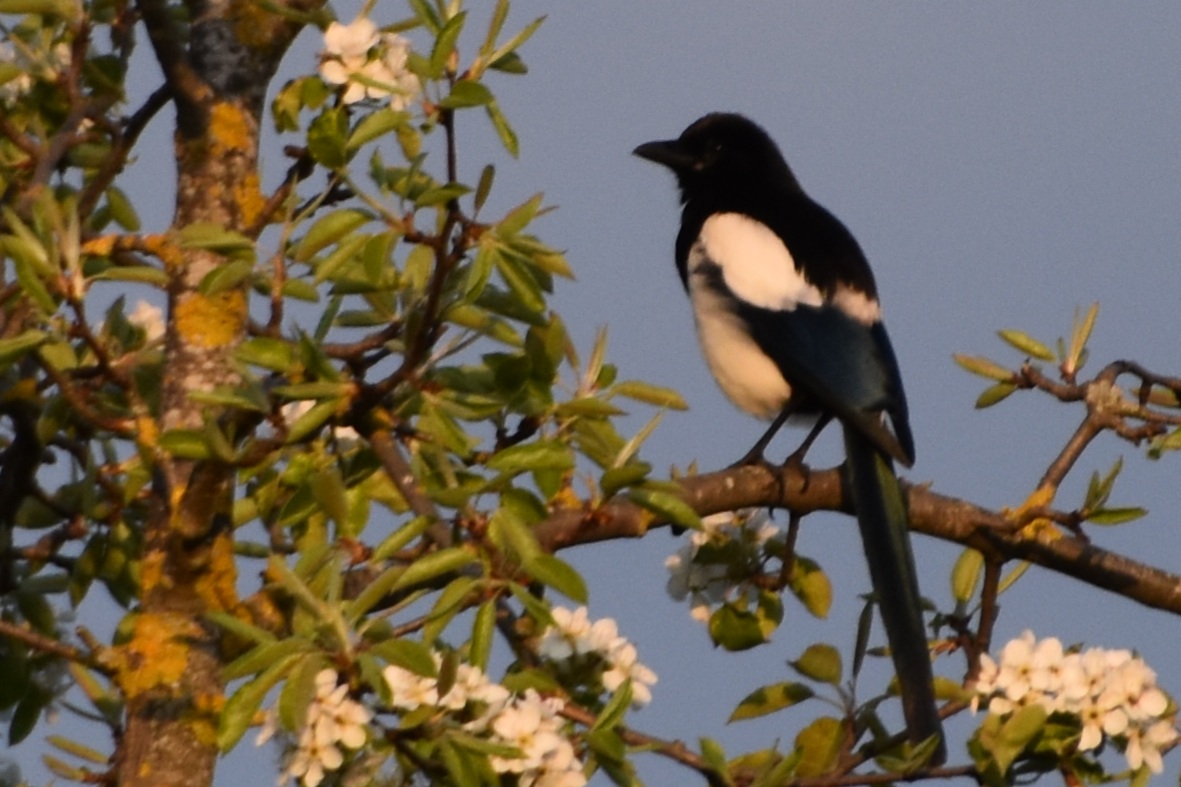 Eurasian magpie ■■
Eurasian magpie ■■ |
.
Automatically generated from Xeno-Canto recording
Call: | ♫ |
| simple rhythmic | ||
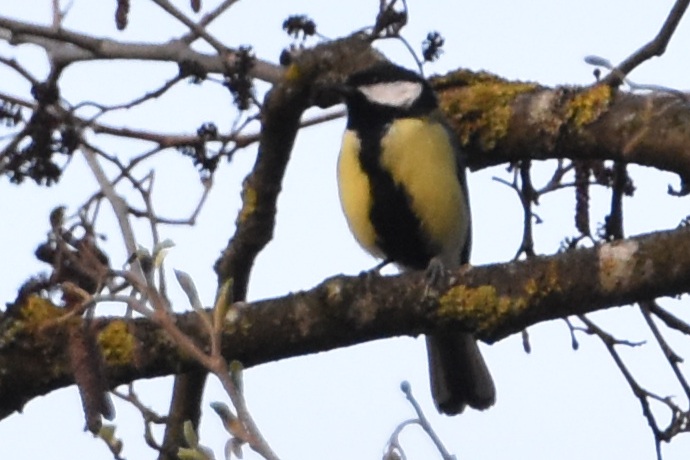 Great tit ■■
Great tit ■■ |
simple rhythmic fast low-high (1-7 KHz) .
Chuck-a-chuck-a-chuck, sometimes preceded by higher 'wheat!'
Call: |
♫
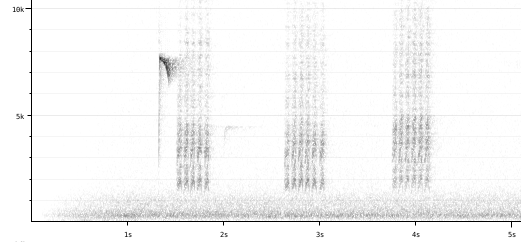
|
| one note | ||
|
|
one note fast low (2-3 KHz) .
A long fast sequence of notes - is it the 'twit' call mentioned above?
Call: Other: It gives loud calls when excited, an abrupt ‘twit”, only one, or in slow series, but often in phrases of 3-4 notes in rapid succession. But in great excitement, it utters phrases of about ten notes per second!
We can also hear some shrill “sirrrr”, becoming harsher in alarm call. The contact call is a thin “tsit” uttered before to take off.
[Link] Other: Very varied voice. Ranging from very high pitched whistles and melodic resonant calls, to chattering and nasal mocking sounds. Characteristic warning call a hard "check" or "chwit", often in rapid series, like a pebble bouncing on hollow ice. [Link] |
♫
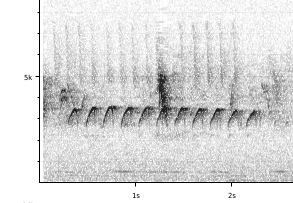
|
| sputter/pebble-clatter | ||
|
|
sputter/pebble-clatter one note slow high (4-9 KHz) .
Personal: A single note usually repeated twice. Somewhat sputtery. BirdID refers to 'a thin, electric "tick". In one source said to be used as alarm call. Call: | ♫ |
|
|
one note slow low (2-3 KHz) .
- contact calllaconic 1 note call w slight dip? Song NABU 1 parakeet like puppy-dog whining, NABU 2 whistles, 2-syllable peek-a-boo, ...
Call: |
♫

|
| whoop | ||
|
|
whoop one note slow medium (2-4 KHz) .
Repeated rising note, not too loud
Call: |
♫

|
|
|
one note slow high (3-7 KHz) .
bird-song.ch: zweisilbig «zilipp» oder einsilbig «zipp»
Call: |
♫

|
| swoop | ||
|
|
swoop one note slow high (3-9 KHz) .
General: Single note repeated Song: |
♫
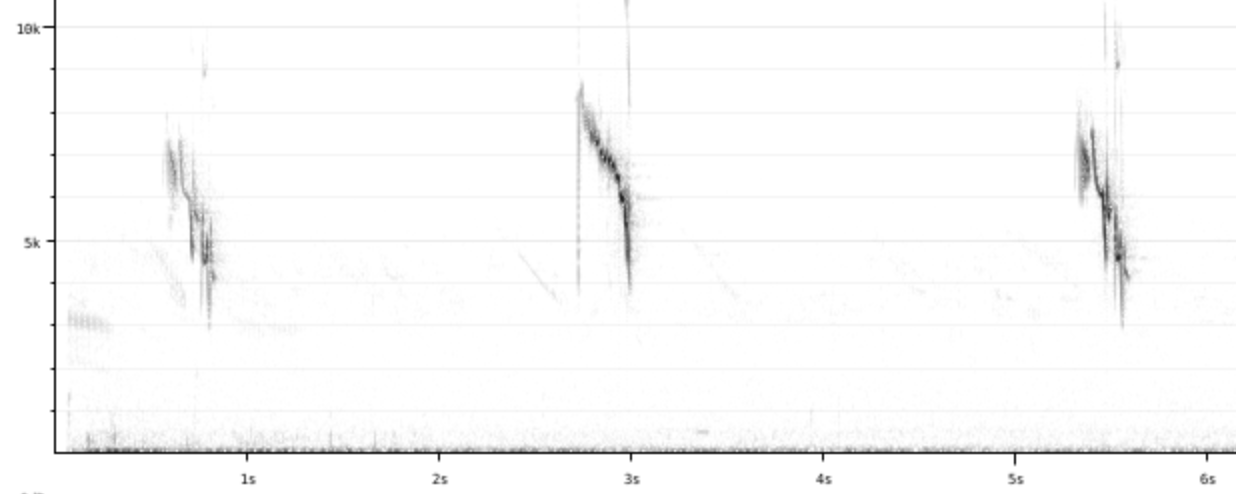
|
 Eurasian tree sparrow ■■
Eurasian tree sparrow ■■ |
.
Automatically generated from Xeno-Canto recording
Call: |
♫

|
|
| . Automatically generated from Xeno-Canto recording Call: Other: Usual call has 5 coos: 2+1+2, contrasted with the collared dove's 3 = 2+1 [Link] | ♫ |
| one note | ||
| swoop | ||
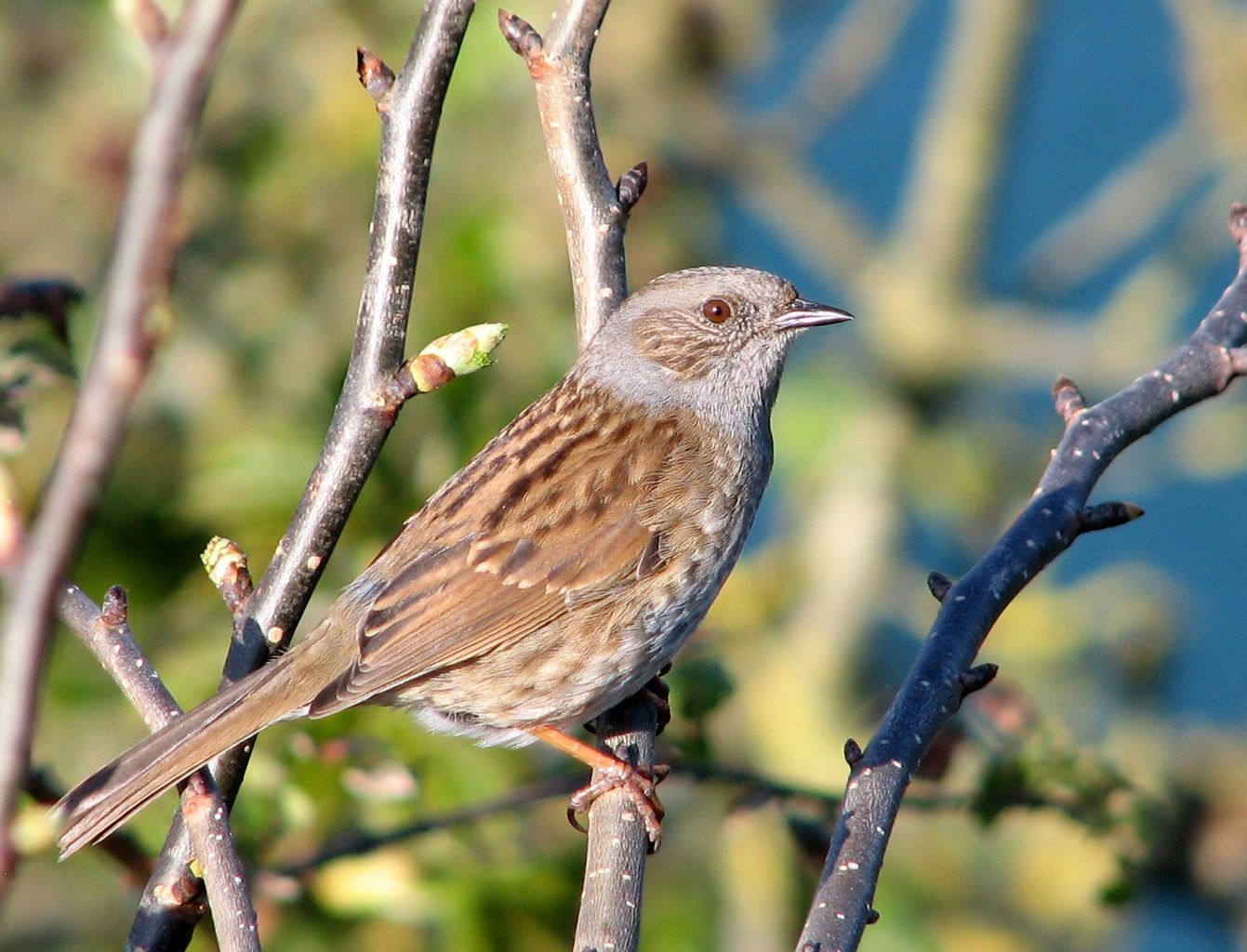 Dunnock ■■
Dunnock ■■ |
swoop one note fast high (5-7 KHz) .
Swooping staccato call 0.5 seconds long heard near Lendikon. Repeated irregularly after 1-3.5 seconds.
Call: |
♫
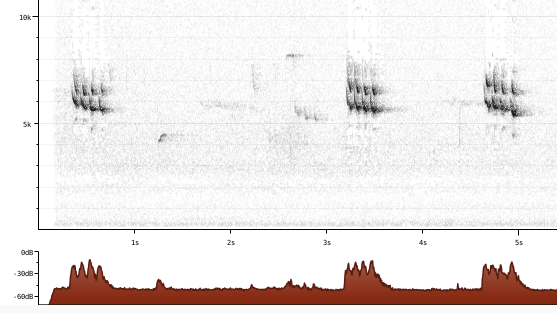
|
|
|
.
- flight callAutomatically generated from Xeno-Canto recording
Call: | ♫ |
|
|
.
Automatically generated from Xeno-Canto recording
Call: | ♫ |
|
|
.
Automatically generated from Xeno-Canto recording
Call: | ♫ |
|
|
.
Automatically generated from Xeno-Canto recording
Call: |
♫
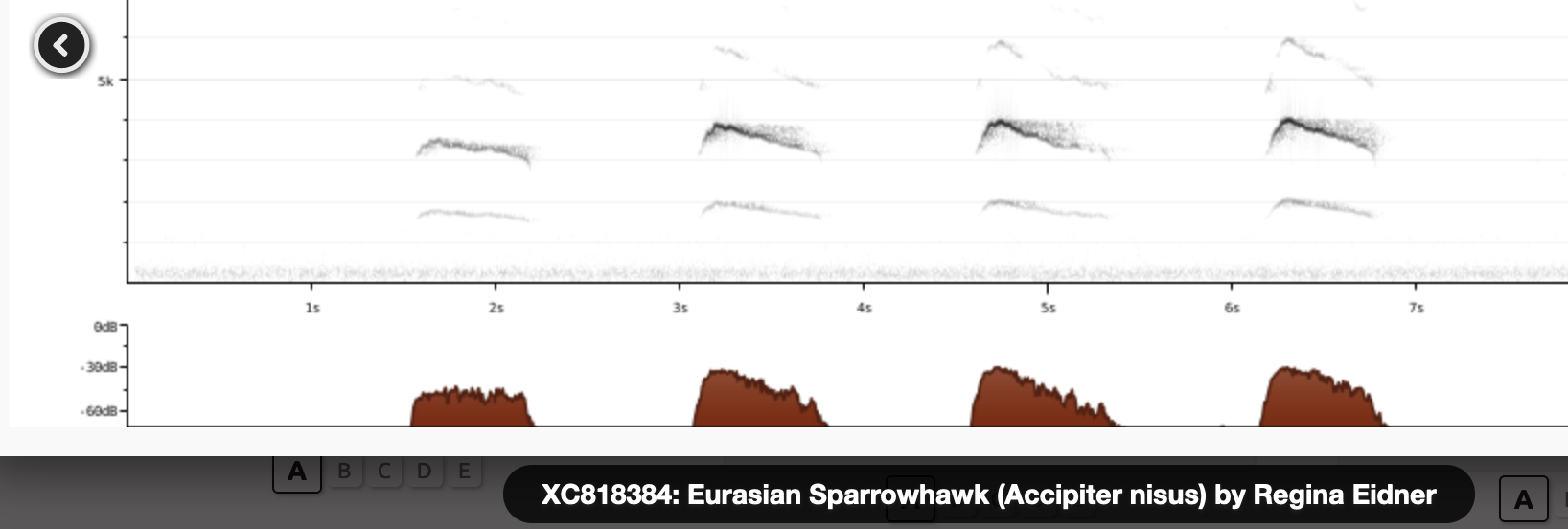
|
| non-musical | ||
|
|
non-musical slow low (1-3 KHz) .
General: Mechanical-sounding sort-of-a-quack Call: |
♫
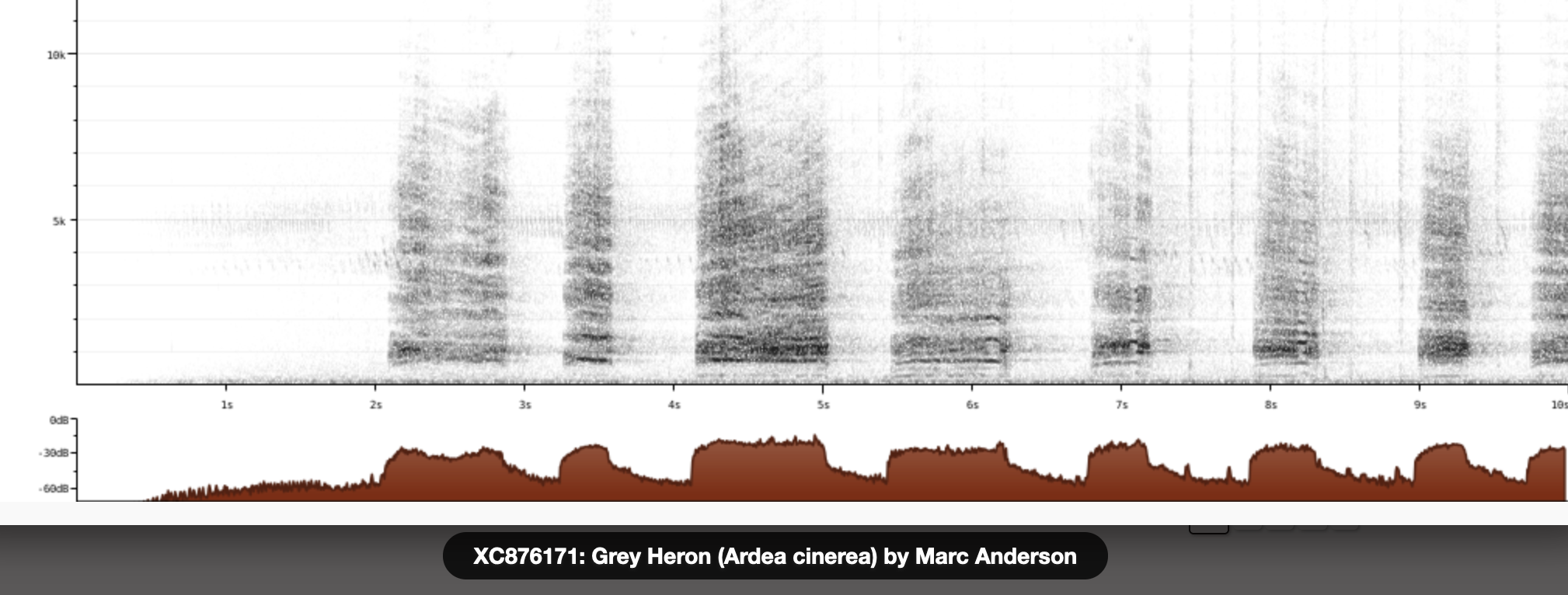
|
| stereotype melodic | ||
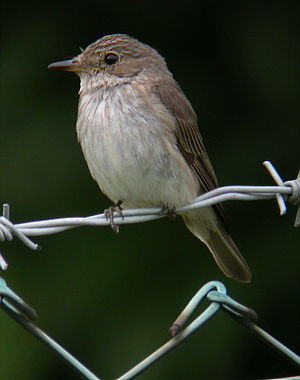 Spotted flycatcher ■■
Spotted flycatcher ■■ |
stereotype melodic slow high (4-7 KHz) .
General: To me something between a one-note and an extremely simple melody, namely med-med chk-hi-med-med, with a very irregular speed, not at all like a metronome. Call: |
♫
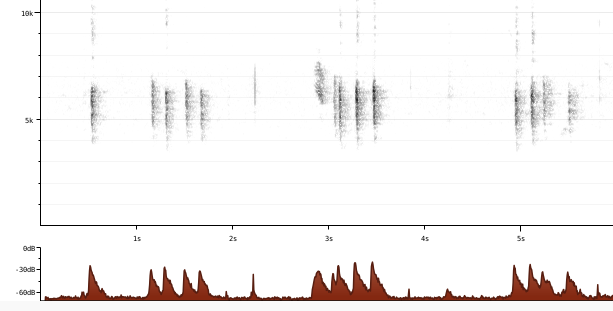
|
| one note | ||
 White-throated dipper ■■
White-throated dipper ■■ |
one note slow high (4-7 KHz) .
Chirp repeated 1-2s.
Call: |
♫
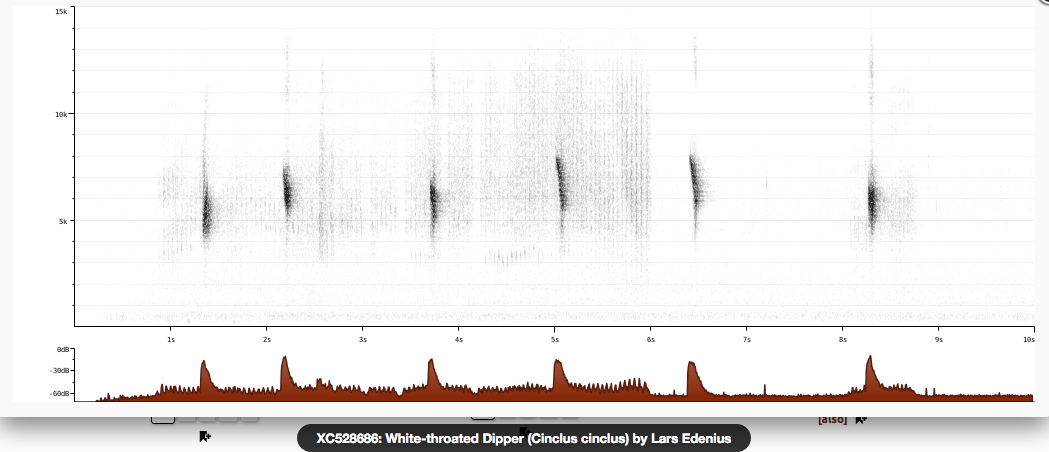
|
|
|
.
Automatically generated from Xeno-Canto recording
Call: | ♫ |
|
|
.
- flight callAutomatically generated from Xeno-Canto recording
Call: |
♫
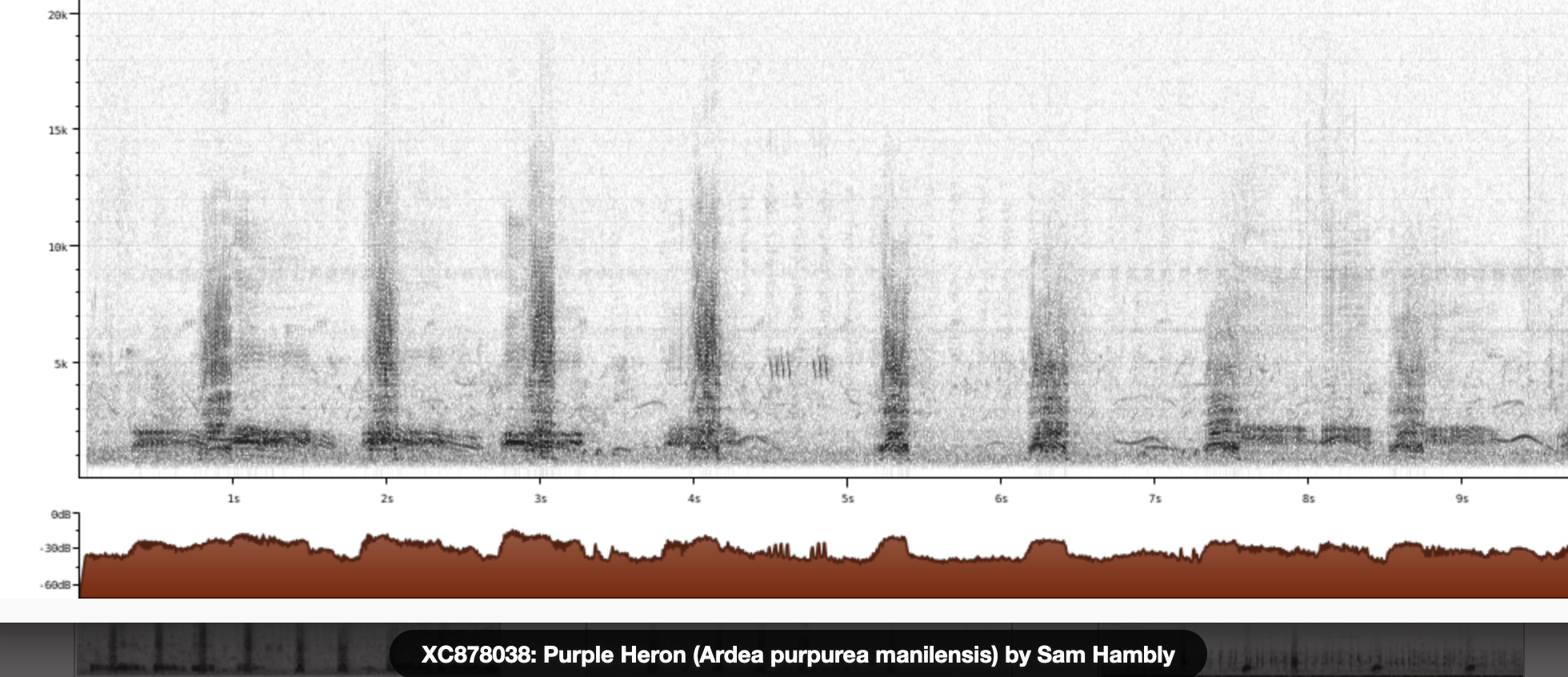
|
|
|
.
Automatically generated from Xeno-Canto recording
Call: | ♫ |
|
|
.
Automatically generated from Xeno-Canto recording
Call: | ♫ |
|
|
.
- flight callAutomatically generated from Xeno-Canto recording
Call: |
♫
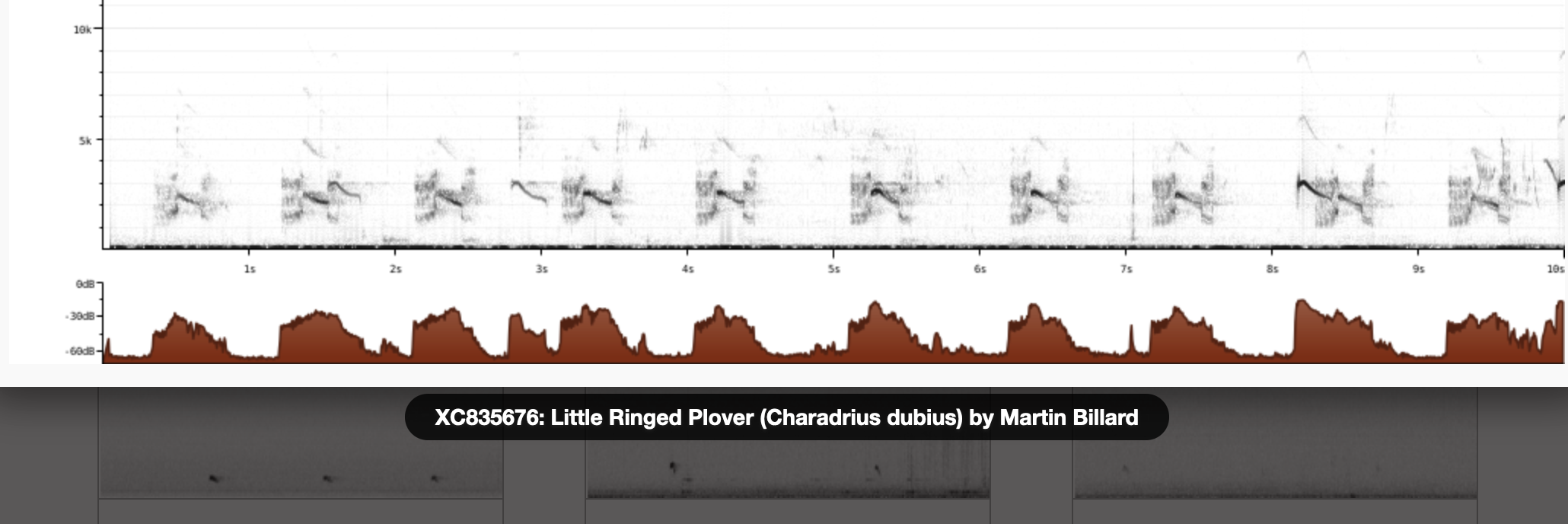
|
 Wood sandpiper ■■
Wood sandpiper ■■ |
.
Automatically generated from Xeno-Canto recording
Call: | ♫ |
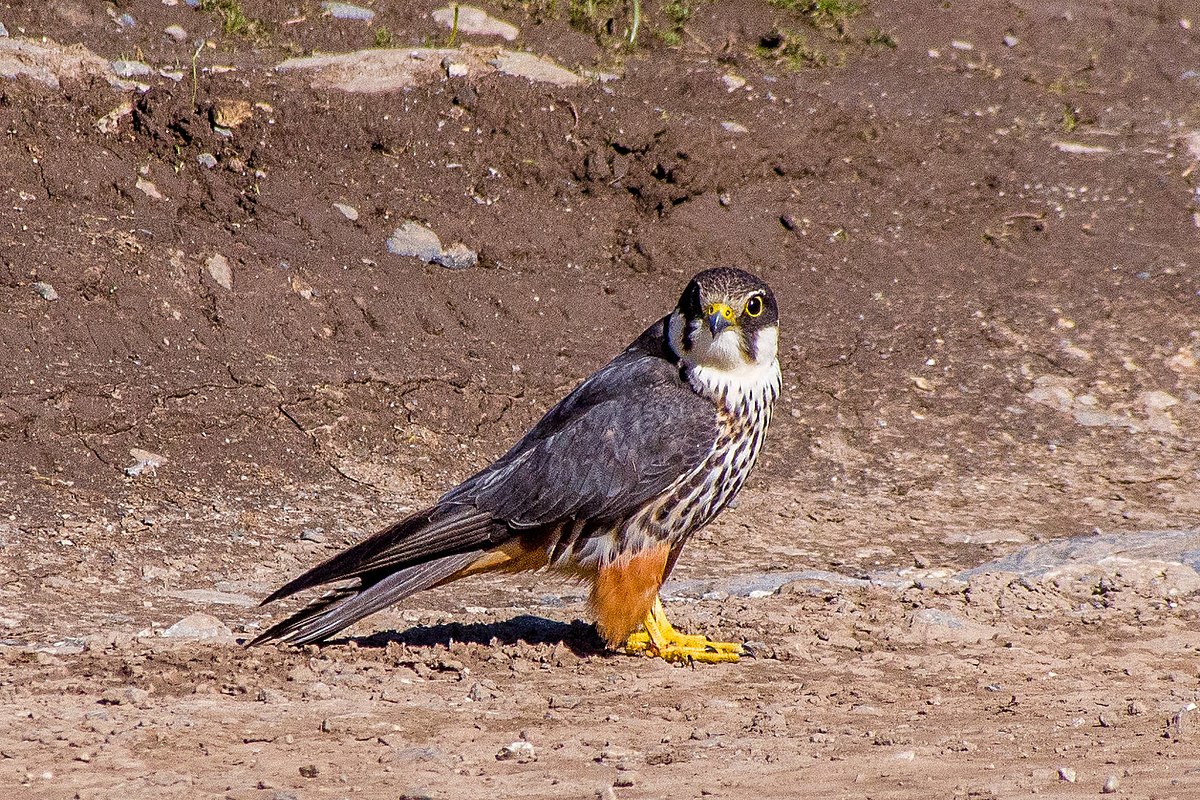 Eurasian hobby ■■
Eurasian hobby ■■ |
.
Automatically generated from Xeno-Canto recording
Call: | ♫ |
|
|
.
- flight callAutomatically generated from Xeno-Canto recording
Call: |
♫

|
|
|
.
Automatically generated from Xeno-Canto recording
Call: | ♫ |
 Dartford warbler
Dartford warbler |
.
Automatically generated from Xeno-Canto recording
Call: | ♫ |
Practice
♫ Answer European greenfinch ♫ Answer Goldcrest ♫ Answer Water pipit ♫ Answer
Eurasian curlew
♫
Answer
American crow
♫
Answer
Eurasian curlew
♫
Answer
American crow
♫
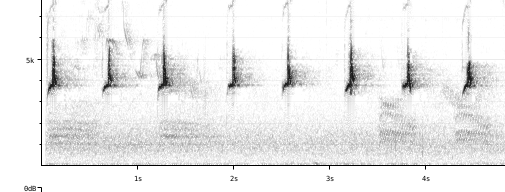 Answer
Common chaffinch Rain call from XenoCanto Recorded by Paul Driver in Mundford, Norfolk, UK
♫
Answer
Common chaffinch Rain call from XenoCanto Recorded by Paul Driver in Mundford, Norfolk, UK
♫
 Answer
Gray-breasted prinia XC547181 - Grey-breasted Prinia - Prinia hodgsonii erro.
♫
Answer
Gray-breasted prinia XC547181 - Grey-breasted Prinia - Prinia hodgsonii erro.
♫
 Answer
Ortolan bunting XC652668 - Ortolan Bunting - Emberiza hortulana - first 4 or so hl, then a lower note - seems the close is highly variable.
♫
Answer
Ortolan bunting XC652668 - Ortolan Bunting - Emberiza hortulana - first 4 or so hl, then a lower note - seems the close is highly variable.
♫
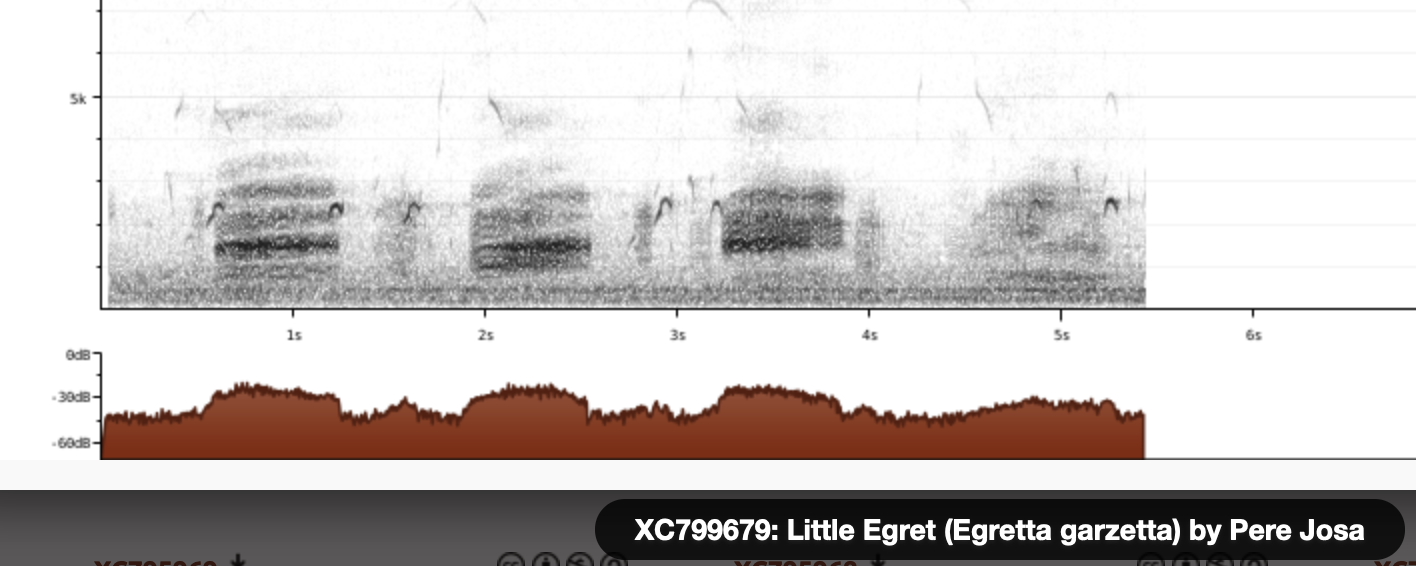 Answer
Little egret XC799679 - Little Egret - Egretta garzetta - call that sounds like its vomiting - Catalunya, Spain.
♫
Answer
Little egret XC799679 - Little Egret - Egretta garzetta - call that sounds like its vomiting - Catalunya, Spain.
♫
 Answer
Bearded reedling
♫
Answer
Barn swallow Barn swallows on the hunt, some quite high.
♫
Answer
Bearded reedling
♫
Answer
Barn swallow Barn swallows on the hunt, some quite high.
♫
 Answer
Whiskered tern XC770351 - Whiskered Tern - Chlidonias hybrida - call, flight call - Heves County, Hungary.
♫
Answer
Whiskered tern XC770351 - Whiskered Tern - Chlidonias hybrida - call, flight call - Heves County, Hungary.
♫
 Answer
Spotted dove XC884362 - Spotted Dove - Spilopelia chinensis.
♫
Answer
Spotted dove XC884362 - Spotted Dove - Spilopelia chinensis.
♫
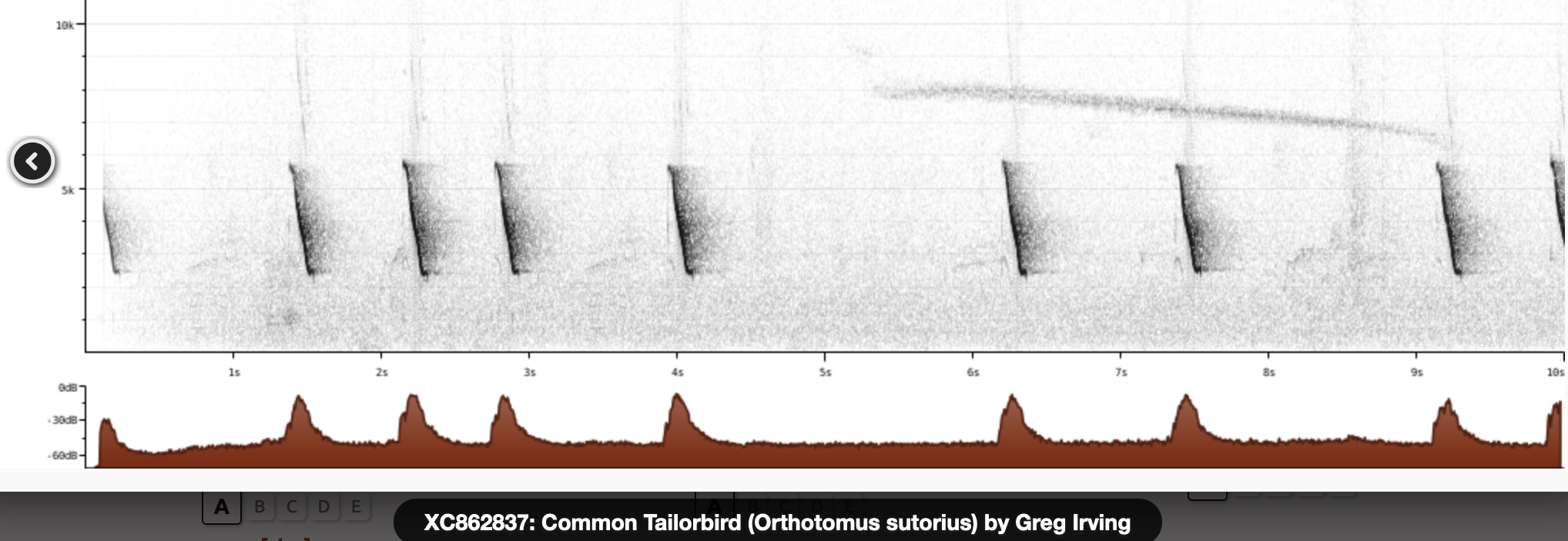 Answer
Common tailor-bird XC862837 - Common Tailorbird - Orthotomus sutorius - call, Chiang Rai, Thailand.
♫
Answer
Common tailor-bird XC862837 - Common Tailorbird - Orthotomus sutorius - call, Chiang Rai, Thailand.
♫
 Answer
Baya weaver XC825824 - Baya Weaver - Ploceus philippinus angelorum - call flock of 75-100 - Chiang Rai, Thailand.
♫
Answer
Baya weaver XC825824 - Baya Weaver - Ploceus philippinus angelorum - call flock of 75-100 - Chiang Rai, Thailand.
♫
 Answer
Common chiffchaff
♫
Answer
Common chiffchaff
♫
 Answer
Common raven XC779842 - Northern Raven - Corvus corax corax - call recorded in Sweden.
♫
Answer
Common raven XC779842 - Northern Raven - Corvus corax corax - call recorded in Sweden.
♫
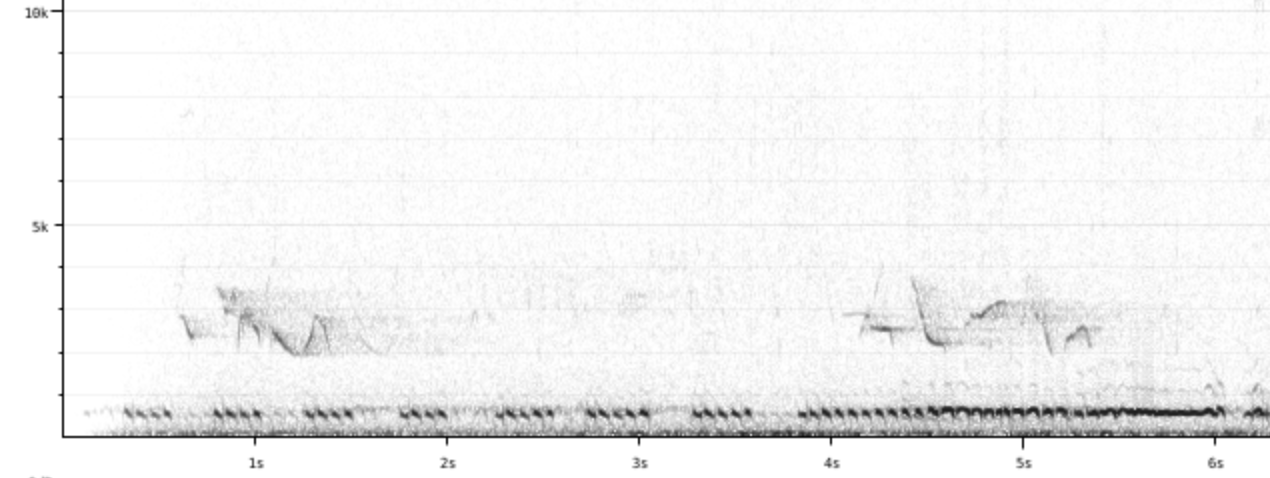 Answer
Black grouse XC731604 - Black Grouse - Lyrurus tetrix.
♫
Answer
Black grouse XC731604 - Black Grouse - Lyrurus tetrix.
♫
 Answer
White wagtail
♫
Answer
White wagtail
♫
 Answer
Zebra dove XC844626 - Zebra Dove - Geopelia striata.
♫
Answer
Zebra dove XC844626 - Zebra Dove - Geopelia striata.
♫
 Answer
Eurasian penduline-tit XC770243 - Eurasian Penduline Tit - Remiz pendulinus - call with a single swoop repeated about every 2 seconds.
♫
Answer
Eurasian penduline-tit XC770243 - Eurasian Penduline Tit - Remiz pendulinus - call with a single swoop repeated about every 2 seconds.
♫
 Answer
Black redstart
♫
Answer
Black redstart
♫
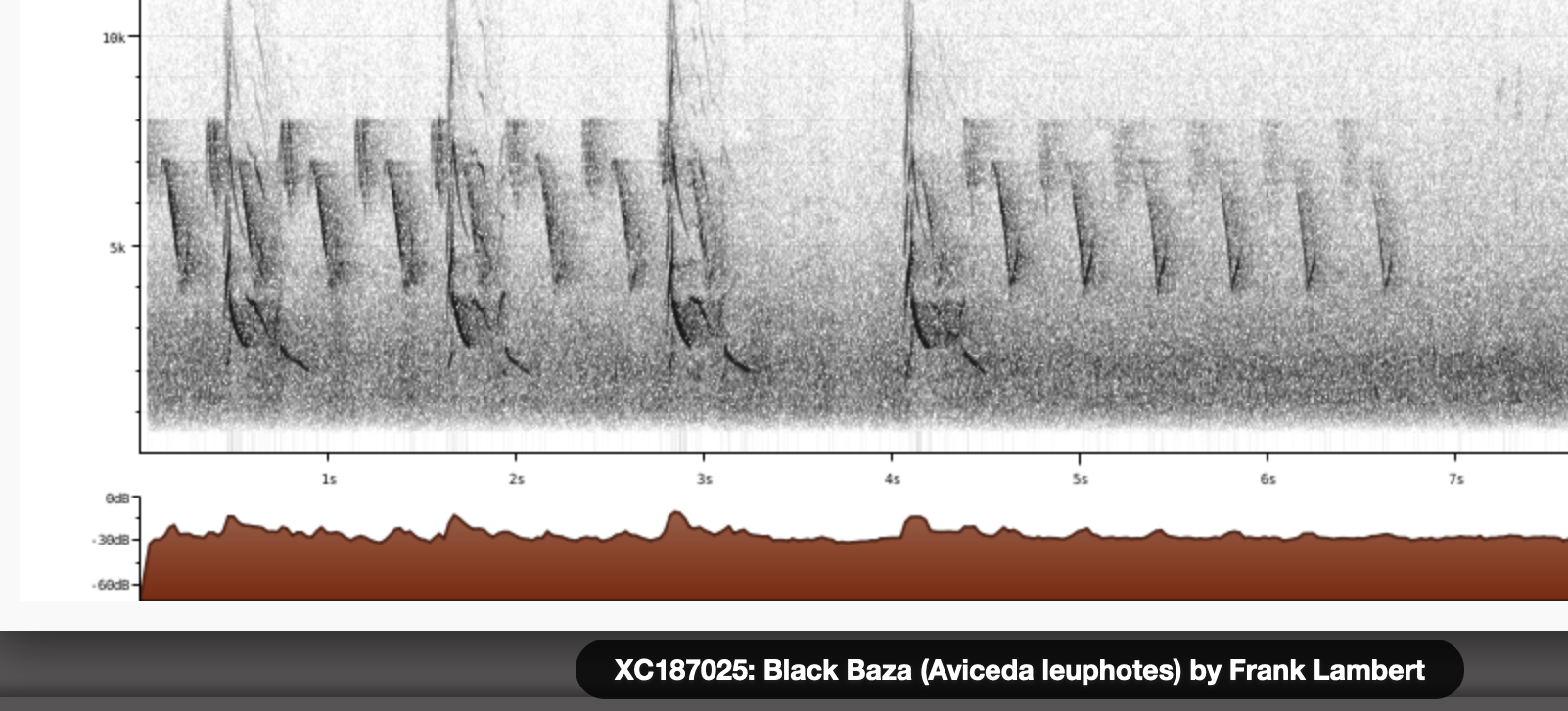 Answer
Black baza XC187025 - Black Baza - Aviceda leuphotes - flight call.
♫
Answer
Cirl bunting
♫
Answer
European serin
♫
Answer
Northern parula
♫
Answer
Common kestrel
♫
Answer
Red kite Rotmilan.
♫
Answer
Wood sandpiper
♫
Answer
Tawny owl Waldkauz in Carona.
♫
Answer
Black baza XC187025 - Black Baza - Aviceda leuphotes - flight call.
♫
Answer
Cirl bunting
♫
Answer
European serin
♫
Answer
Northern parula
♫
Answer
Common kestrel
♫
Answer
Red kite Rotmilan.
♫
Answer
Wood sandpiper
♫
Answer
Tawny owl Waldkauz in Carona.
♫
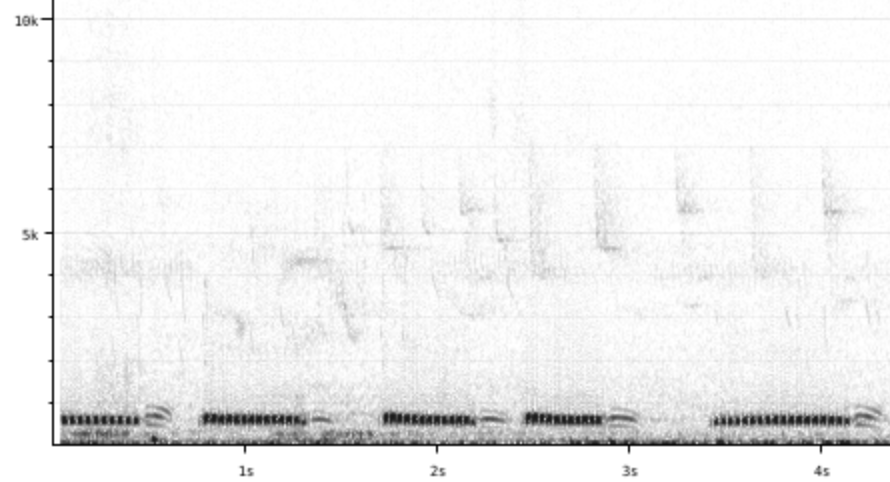 Answer
Turtle dove XC728296 - European Turtle Dove - Streptopelia turtur.
♫
Answer
Great cormorant
♫
Answer
Turtle dove XC728296 - European Turtle Dove - Streptopelia turtur.
♫
Answer
Great cormorant
♫
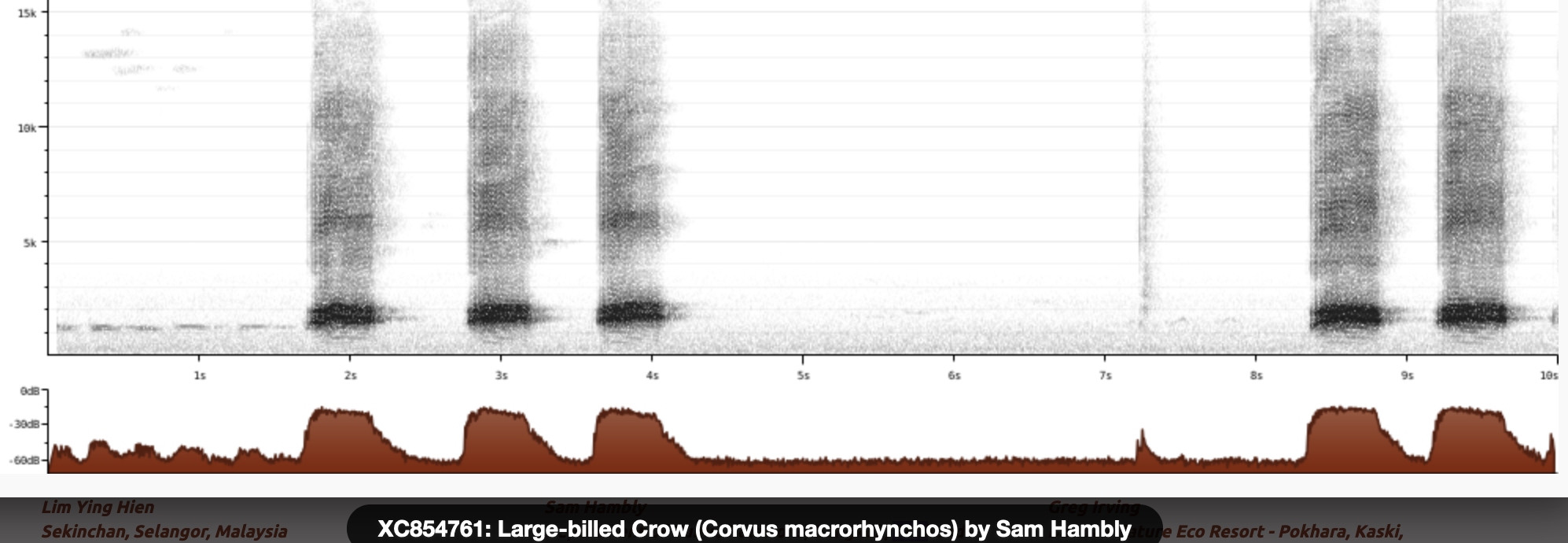 Answer
Large-billed crow XC854761 - Large-billed Crow - Corvus macrorhynchos.
♫
Answer
Large-billed crow XC854761 - Large-billed Crow - Corvus macrorhynchos.
♫
 Answer
Bohemian waxwing XC763124 - Bohemian Waxwing - Bombycilla garrulus - call recorded in Sweden.
♫
Answer
Bohemian waxwing XC763124 - Bohemian Waxwing - Bombycilla garrulus - call recorded in Sweden.
♫
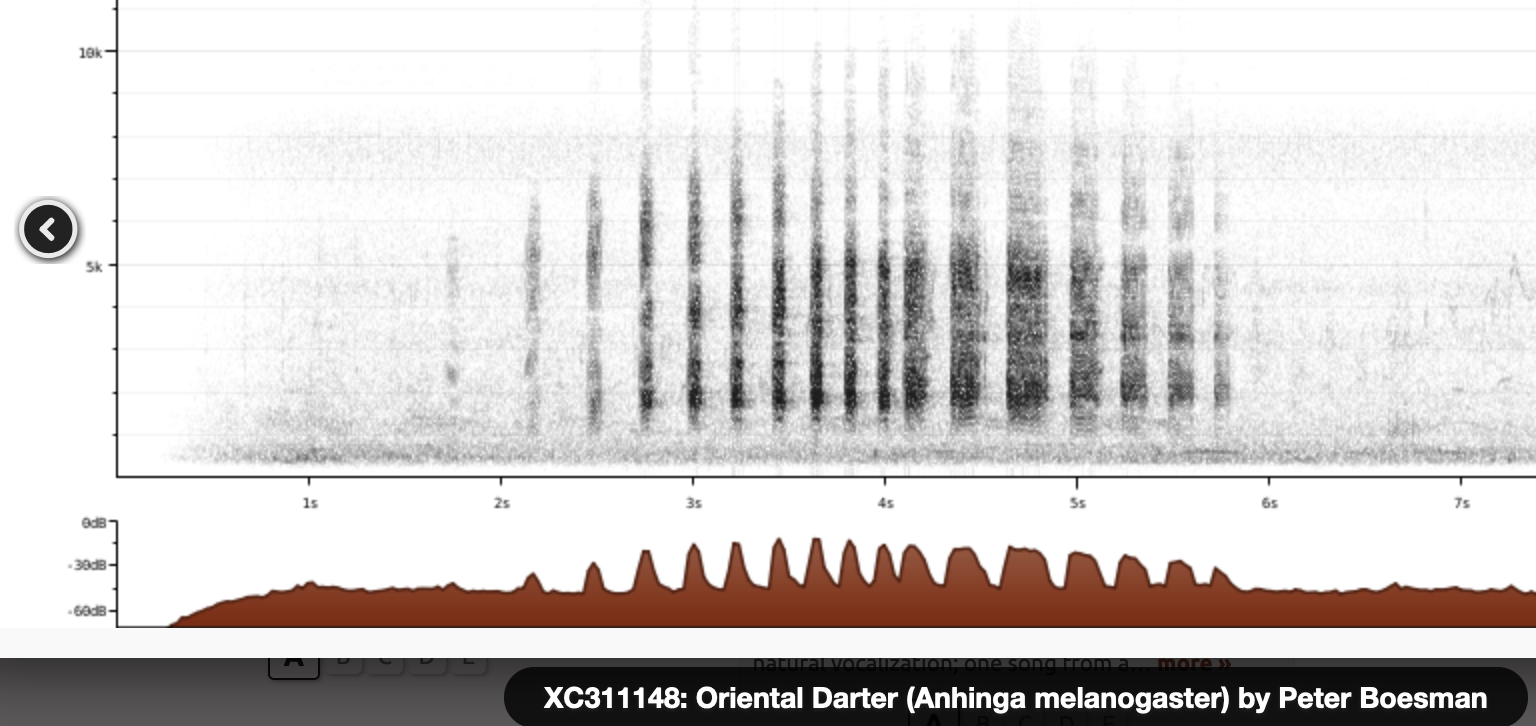 Answer
Oriental darter XC311148 - Oriental Darter - Anhinga melanogaster - quacky call - Tissamaharama area, Sri Lanka.
♫
Answer
Goosander
♫
Answer
Eurasian jay XC536051 Eurasian Jay harsh call 20s.
♫
Answer
American redstart
♫
Answer
Yellowhammer
♫
Answer
Oriental darter XC311148 - Oriental Darter - Anhinga melanogaster - quacky call - Tissamaharama area, Sri Lanka.
♫
Answer
Goosander
♫
Answer
Eurasian jay XC536051 Eurasian Jay harsh call 20s.
♫
Answer
American redstart
♫
Answer
Yellowhammer
♫
 Answer
Little ringed plover XC835676 - Little Ringed Plover - Charadrius dubius - flight call, song - Dundgovi, Mongolia.
♫
Answer
Northern mockingbird Probably northern mockingbird at Silversage Court, Hunt Valley.
♫
Answer
Carolina chickadee
♫
Answer
Little ringed plover XC835676 - Little Ringed Plover - Charadrius dubius - flight call, song - Dundgovi, Mongolia.
♫
Answer
Northern mockingbird Probably northern mockingbird at Silversage Court, Hunt Valley.
♫
Answer
Carolina chickadee
♫
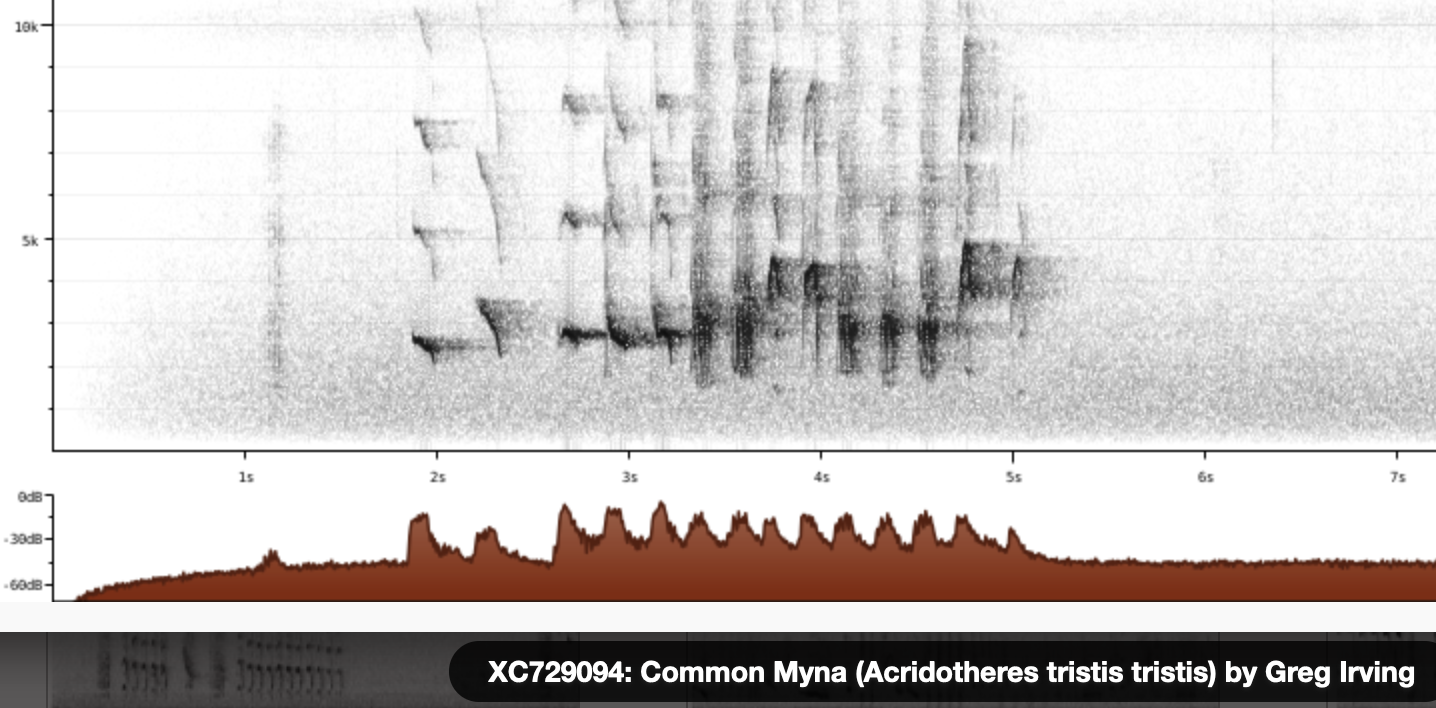 Answer
Common myna XC729094 - Common Myna - Acridotheres tristis tristis.
♫
Answer
Tenerife blue tit
♫
Answer
Song sparrow Song sparrow, Cherrywood Court.
♫
Answer
Chipping sparrow
♫
Answer
Common myna XC729094 - Common Myna - Acridotheres tristis tristis.
♫
Answer
Tenerife blue tit
♫
Answer
Song sparrow Song sparrow, Cherrywood Court.
♫
Answer
Chipping sparrow
♫
 Answer
Wood lark XC741579 - Woodlark - Lullula arborea - four note call recorded in Sweden.
♫
Answer
Wood lark XC741579 - Woodlark - Lullula arborea - four note call recorded in Sweden.
♫
 Answer
Black cap warbler XC546030 black cap warbler so-called tac and djii call.
♫
Answer
Black cap warbler XC546030 black cap warbler so-called tac and djii call.
♫
 Answer
Chinese pond heron XC794055 - Chinese Pond Heron - Ardeola bacchus - flight call - Mai Po Nature Reserve, New Territories, Hong Kong, China.
♫
Answer
Chinese pond heron XC794055 - Chinese Pond Heron - Ardeola bacchus - flight call - Mai Po Nature Reserve, New Territories, Hong Kong, China.
♫
 Answer
Painted stork XC460217 - Painted Stork - Mycteria leucocephala - plaintive, abrasive call - Keoladeo National Park, Bharatpur, Rajasthan, India.
♫
Answer
European robin I heard 3 or 4 scattered birds calling it in woods with underbrush but saw no birds. BirdNet told me they were robins, which I found hard to believe, but on comparing it with recordings at XenoCanto, I was convinced! Maybe they were telling each other "Don't show yourself to that alarming guy!".
♫
Answer
Song thrush XC570136 song thrush alarm call.
♫
Answer
Painted stork XC460217 - Painted Stork - Mycteria leucocephala - plaintive, abrasive call - Keoladeo National Park, Bharatpur, Rajasthan, India.
♫
Answer
European robin I heard 3 or 4 scattered birds calling it in woods with underbrush but saw no birds. BirdNet told me they were robins, which I found hard to believe, but on comparing it with recordings at XenoCanto, I was convinced! Maybe they were telling each other "Don't show yourself to that alarming guy!".
♫
Answer
Song thrush XC570136 song thrush alarm call.
♫
 Answer
European nuthatch Long fast sequence of identical whoops, possibly 'twit' call.
♫
Answer
Northern cardinal
♫
Answer
European nuthatch Long fast sequence of identical whoops, possibly 'twit' call.
♫
Answer
Northern cardinal
♫
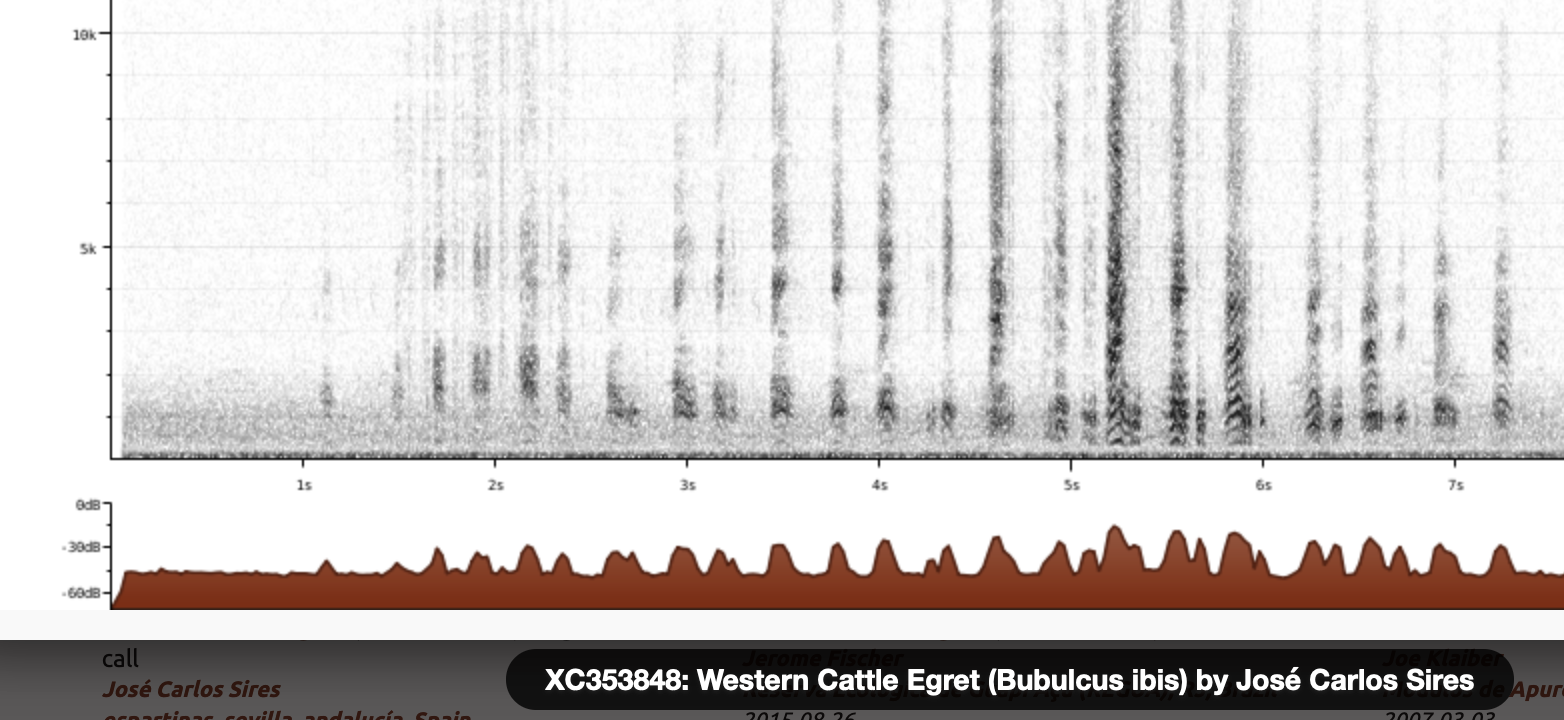 Answer
Cattle egret XC353848 - Western Cattle Egret - Bubulcus ibis - flight call - sevilla, andalucía, Spain.
♫
Answer
Savi's warbler
♫
Answer
Eurasian coot Taucherli Pfaeffikersee.
♫
Answer
Canada goose
♫
Answer
Cattle egret XC353848 - Western Cattle Egret - Bubulcus ibis - flight call - sevilla, andalucía, Spain.
♫
Answer
Savi's warbler
♫
Answer
Eurasian coot Taucherli Pfaeffikersee.
♫
Answer
Canada goose
♫
 Answer
Common blackbird XC557335 common blackbird alarm call.
♫
Answer
Algerian nuthatch
♫
Answer
Eurasian hobby
♫
Answer
White stork
♫
Answer
Common blackbird XC557335 common blackbird alarm call.
♫
Answer
Algerian nuthatch
♫
Answer
Eurasian hobby
♫
Answer
White stork
♫
 Answer
Jackdaw
♫
Answer
Jackdaw
♫
 Answer
Redwing XC320315 - Redwing - Turdus iliacus.
♫
Answer
Alpine swift
♫
Answer
Common starling
♫
Answer
Willow tit Willow tit st moritz.
♫
Answer
Fieldfare
♫
Answer
Hooded warbler
♫
Answer
Redwing XC320315 - Redwing - Turdus iliacus.
♫
Answer
Alpine swift
♫
Answer
Common starling
♫
Answer
Willow tit Willow tit st moritz.
♫
Answer
Fieldfare
♫
Answer
Hooded warbler
♫
 Answer
Dunnock
♫
Answer
Dunnock
♫
 Answer
Northern barred owl XC696582 - Barred Owl monkey call - Strix varia.
♫
Answer
Northern barred owl XC696582 - Barred Owl monkey call - Strix varia.
♫
 Answer
Carrion crow XC762056 - Hooded Crow - Corvus cornix - call recorded in Germany.
♫
Answer
Carrion crow XC762056 - Hooded Crow - Corvus cornix - call recorded in Germany.
♫
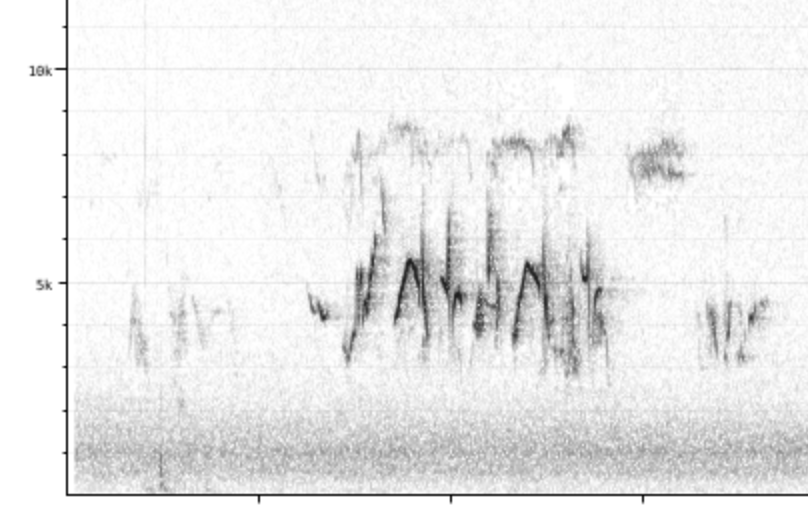 Answer
Common stonechat XC710467 - European Stonechat - Saxicola rubicola rubicola.
♫
Answer
Wood thrush
♫
Answer
Common stonechat XC710467 - European Stonechat - Saxicola rubicola rubicola.
♫
Answer
Wood thrush
♫
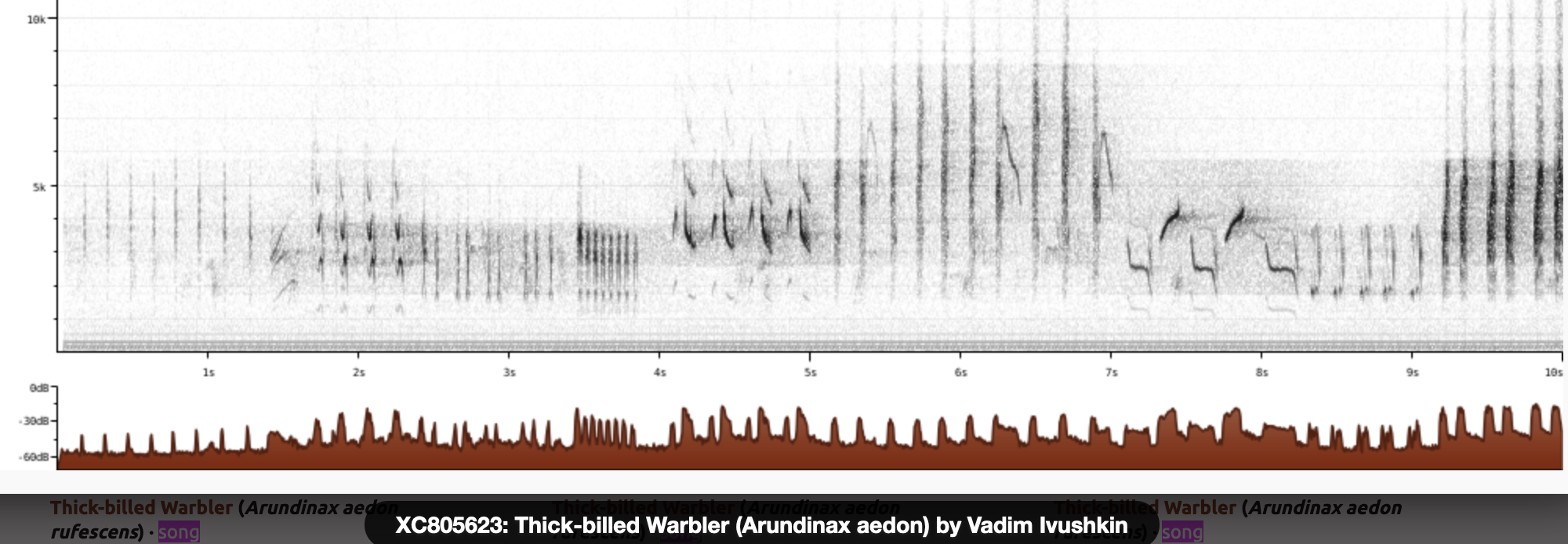 Answer
Thick-billed warbler XC805623 - Thick-billed Warbler - Arundinax aedon.
♫
Answer
Red-winged blackbird
♫
Answer
Thick-billed warbler XC805623 - Thick-billed Warbler - Arundinax aedon.
♫
Answer
Red-winged blackbird
♫
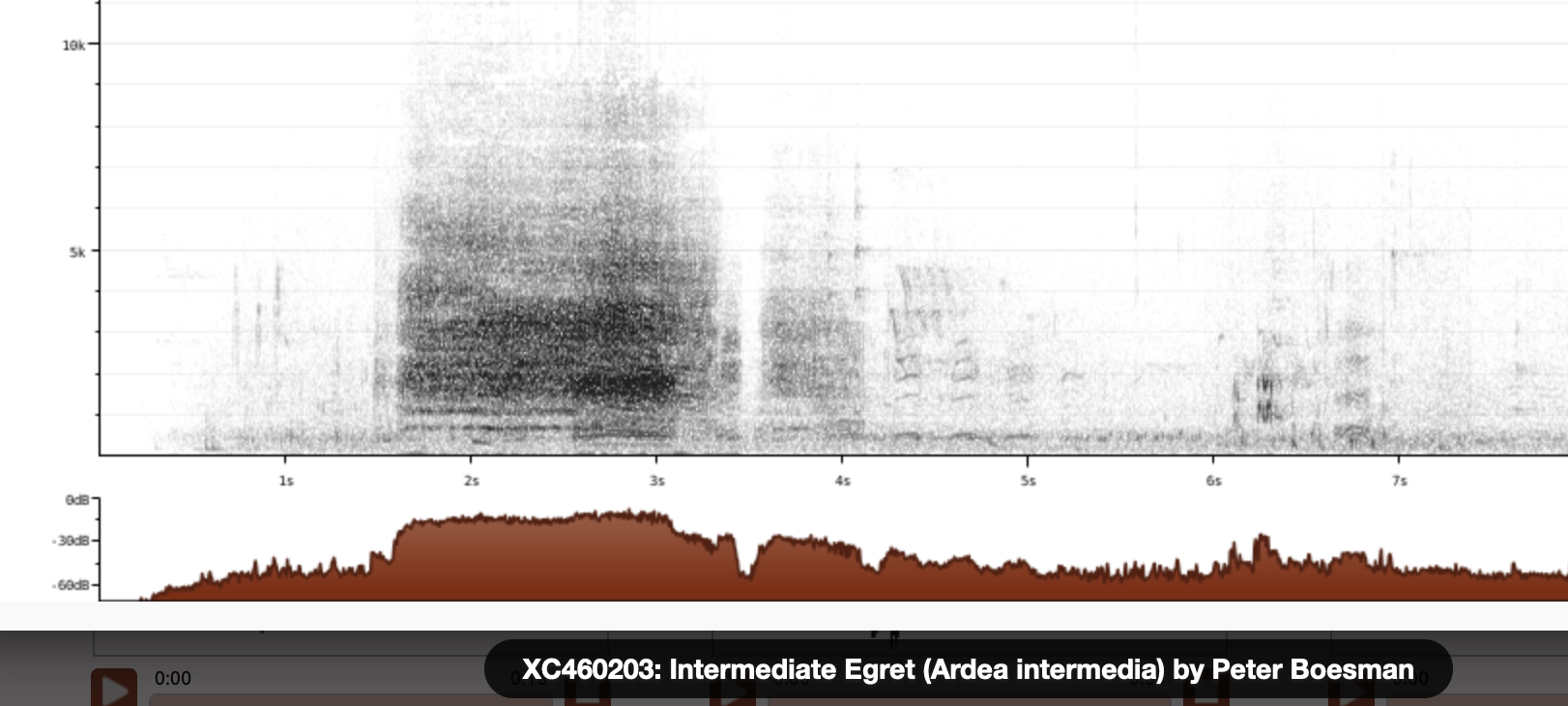 Answer
Medium egret XC460203 - Intermediate Egret - Ardea intermedia - call - Bharatpur, Rajasthan, India.
♫
Answer
Medium egret XC460203 - Intermediate Egret - Ardea intermedia - call - Bharatpur, Rajasthan, India.
♫
 Answer
Black-winged stilt XC863470 - Black-winged Stilt - Himantopus himantopus - flight call, a squeaky yapping - Camargue, France.
♫
Answer
European pied flycatcher
♫
Answer
Eastern wood-pewee
♫
Answer
Western bonelli's warbler
♫
Answer
Black-winged stilt XC863470 - Black-winged Stilt - Himantopus himantopus - flight call, a squeaky yapping - Camargue, France.
♫
Answer
European pied flycatcher
♫
Answer
Eastern wood-pewee
♫
Answer
Western bonelli's warbler
♫
 Answer
Italian sparrow XC729736 - Italian Sparrow - Passer italiae - typical sparrowish swoop or fast falling 3-note call.
♫
Answer
Northern flicker
♫
Answer
Common house martin
♫
Answer
Common scimitar-bill Bill laeuft Richtung Singdrossel bei der Waldhuette in Fehraltorf.
♫
Answer
Carolina wren Carolina wren sings Figaro.
♫
Answer
Eurasian reed warbler Teichrohrsänger wahrscheinlich, siehe Foto.
♫
Answer
Sedge warbler Pfäffikersee schilfrohrsänger vielleicht.
♫
Answer
Italian sparrow XC729736 - Italian Sparrow - Passer italiae - typical sparrowish swoop or fast falling 3-note call.
♫
Answer
Northern flicker
♫
Answer
Common house martin
♫
Answer
Common scimitar-bill Bill laeuft Richtung Singdrossel bei der Waldhuette in Fehraltorf.
♫
Answer
Carolina wren Carolina wren sings Figaro.
♫
Answer
Eurasian reed warbler Teichrohrsänger wahrscheinlich, siehe Foto.
♫
Answer
Sedge warbler Pfäffikersee schilfrohrsänger vielleicht.
♫
 Answer
Black woodpecker Blood curdling call Source as noted in xeno-canto: Recordist Bodo Sonnenburg
2021-10-11 07:26
Latitude 52.2333
Longitude 13.8365
Location Oder-Spree (near Storkow (Mark)), Brandenburg
Country Germany
Elevation 40 m
♫
Answer
Whinchat
♫
Answer
Black woodpecker Blood curdling call Source as noted in xeno-canto: Recordist Bodo Sonnenburg
2021-10-11 07:26
Latitude 52.2333
Longitude 13.8365
Location Oder-Spree (near Storkow (Mark)), Brandenburg
Country Germany
Elevation 40 m
♫
Answer
Whinchat
♫
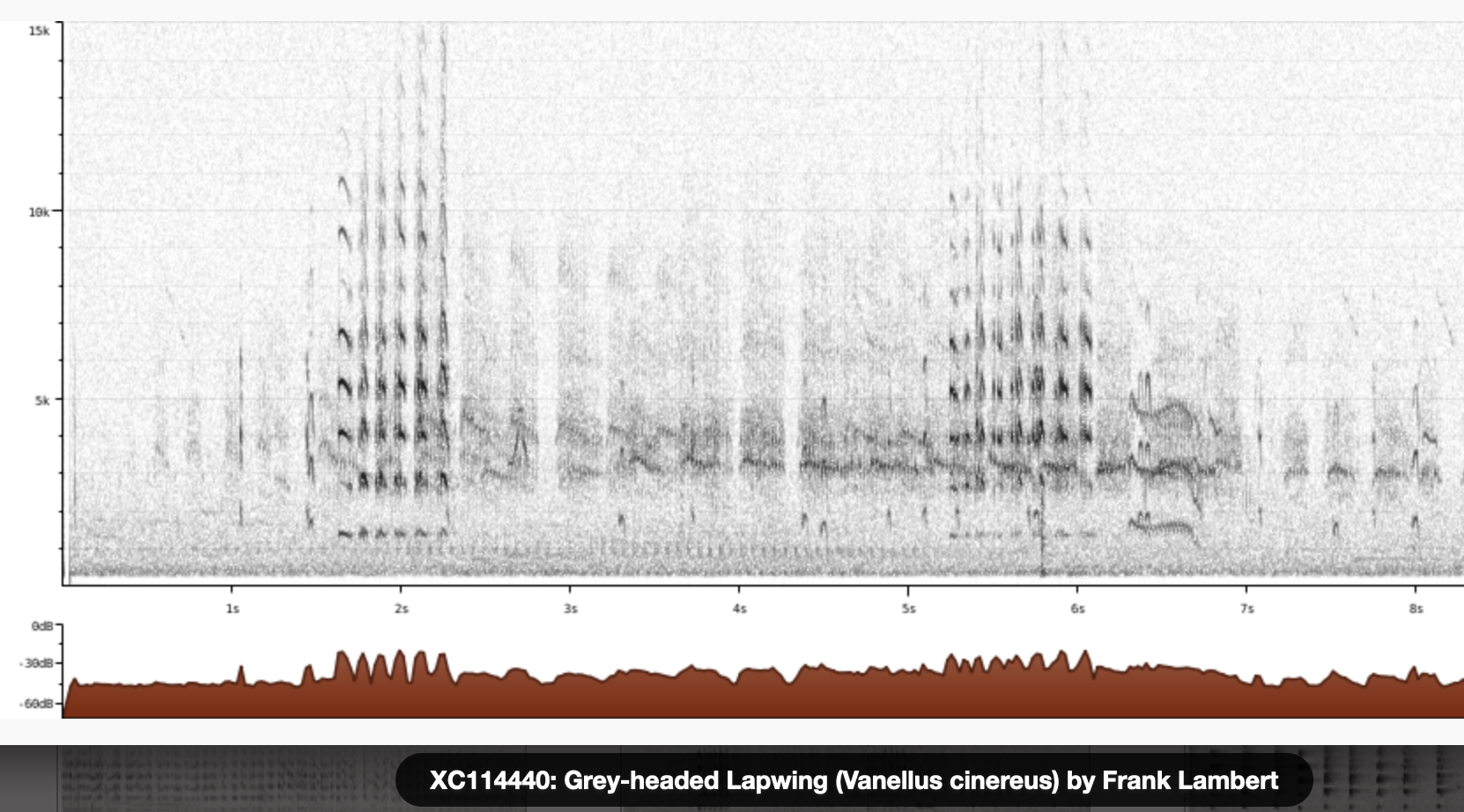 Answer
Grey-headed lapwing XC114440 - Grey-headed Lapwing - Vanellus cinereus - call, Inner Mongolia, nr Tumuji Town, China.
♫
Answer
Grey-headed lapwing XC114440 - Grey-headed Lapwing - Vanellus cinereus - call, Inner Mongolia, nr Tumuji Town, China.
♫
 Answer
Short-toed treecreeper A recording from Jorge Leitão in the Netherlands that I assume is the tyt tyt call.
♫
Answer
Short-toed treecreeper A recording from Jorge Leitão in the Netherlands that I assume is the tyt tyt call.
♫
 Answer
Marsh tit Call from Xeno-Canto
♫
Answer
Eurasian wren XC195946 Eurasian wren call.
♫
Answer
Marsh tit Call from Xeno-Canto
♫
Answer
Eurasian wren XC195946 Eurasian wren call.
♫
 Answer
Brambling XC731031 - Brambling - Fringilla montifringilla.
♫
Answer
Blue-gray gnatcatcher
♫
Answer
Gadwall Schnatterenten, Moewen und an 29 Sekunden eindeutig ein Jet von Swiss, da wir in Neeracherried sehr nach am Kloten Flughafen sind, BirdNet schlaegt auch Teichrohrsaenger vor, wie auch ein Moewe-Typ aus Kalifornien.
♫
Answer
Brambling XC731031 - Brambling - Fringilla montifringilla.
♫
Answer
Blue-gray gnatcatcher
♫
Answer
Gadwall Schnatterenten, Moewen und an 29 Sekunden eindeutig ein Jet von Swiss, da wir in Neeracherried sehr nach am Kloten Flughafen sind, BirdNet schlaegt auch Teichrohrsaenger vor, wie auch ein Moewe-Typ aus Kalifornien.
♫
 Answer
Middle spotted woodpecker
♫
Answer
Middle spotted woodpecker
♫
 Answer
Eurasian golden oriole
♫
Answer
Eurasian golden oriole
♫
 Answer
Asian openbill XC369048 - Asian Openbill - Anastomus oscitans.
♫
Answer
Grey catbird
♫
Answer
Coal tit
♫
Answer
Asian openbill XC369048 - Asian Openbill - Anastomus oscitans.
♫
Answer
Grey catbird
♫
Answer
Coal tit
♫
 Answer
Lesser spotted woodpecker
♫
Answer
Lesser spotted woodpecker
♫
 Answer
Red-billed chough XC417702 - Red-billed Chough - Pyrrhocorax pyrrhocorax - flight call recorded in Spain.
♫
Answer
Red-backed shrike
♫
Answer
Red-billed chough XC417702 - Red-billed Chough - Pyrrhocorax pyrrhocorax - flight call recorded in Spain.
♫
Answer
Red-backed shrike
♫
 Answer
Common redstart
♫
Answer
House wren
♫
Answer
Common redstart
♫
Answer
House wren
♫
 Answer
Grey heron XC876171 - Grey Heron - Ardea cinerea - call - Manyeleti Game Reserve, South Africa.
♫
Answer
Common wood pigeon
♫
Answer
Red-bellied woodpecker
♫
Answer
Eastern phoebe
♫
Answer
Grey heron XC876171 - Grey Heron - Ardea cinerea - call - Manyeleti Game Reserve, South Africa.
♫
Answer
Common wood pigeon
♫
Answer
Red-bellied woodpecker
♫
Answer
Eastern phoebe
♫
 Answer
German's swiftlet XC855353 - Germain's Swiftlet - Aerodramus germani - call - Nong Pen, Vientiane Prefecture, Laos.
♫
Answer
German's swiftlet XC855353 - Germain's Swiftlet - Aerodramus germani - call - Nong Pen, Vientiane Prefecture, Laos.
♫
 Answer
Willow warbler Call recorded in UK, sounds typical to me, and spiced up by a yellowhammer in the background and several other birds
♫
Answer
Cory's shearwater Cory's Shearwaters meowing at Hotel Jardin Tecina in Playa Santiago, La Gomera edited down.
♫
Answer
Marsh warbler Sumpfrohrsaenger, Kaltbrunnerriet.
♫
Answer
Willow warbler Call recorded in UK, sounds typical to me, and spiced up by a yellowhammer in the background and several other birds
♫
Answer
Cory's shearwater Cory's Shearwaters meowing at Hotel Jardin Tecina in Playa Santiago, La Gomera edited down.
♫
Answer
Marsh warbler Sumpfrohrsaenger, Kaltbrunnerriet.
♫
 Answer
Spotted flycatcher XC656714 - Spotted Flycatcher - Muscicapa striata - Sounds similar to what I know.
♫
Answer
Red-eyed vireo Supposedly red eyed vireo at ncr trail, did not see.
♫
Answer
Western subalpine warbler
♫
Answer
Spotted flycatcher XC656714 - Spotted Flycatcher - Muscicapa striata - Sounds similar to what I know.
♫
Answer
Red-eyed vireo Supposedly red eyed vireo at ncr trail, did not see.
♫
Answer
Western subalpine warbler
♫
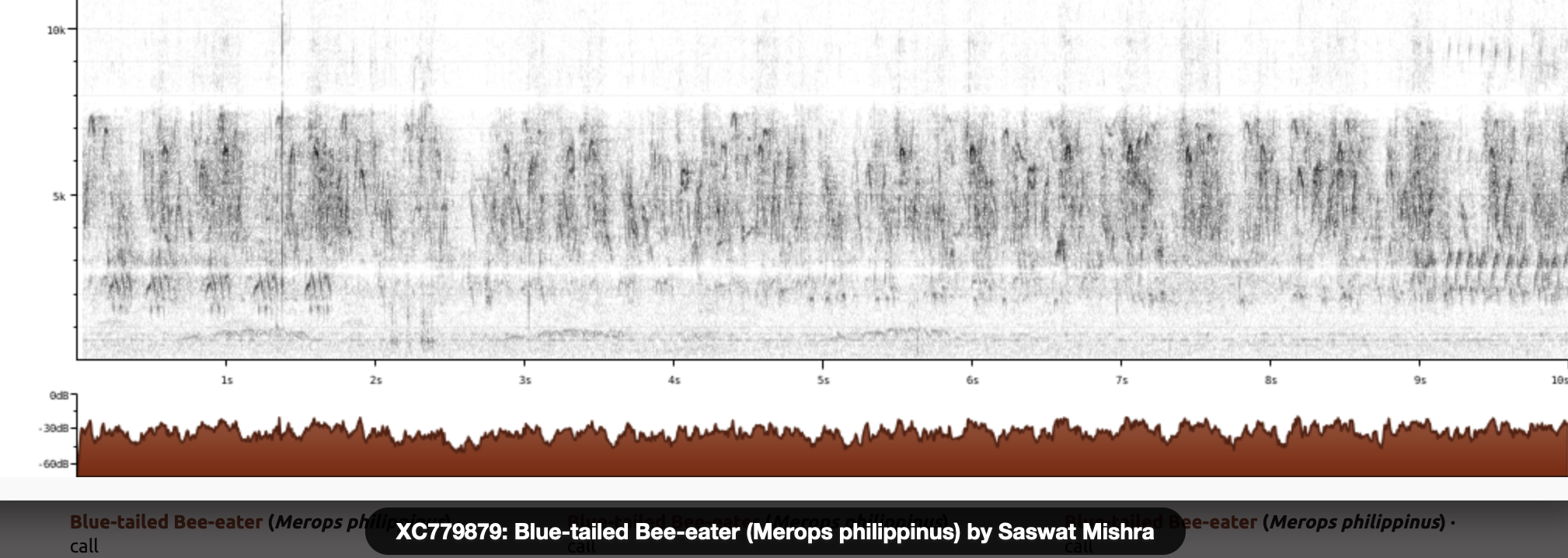 Answer
Blue-tailed bee-eater XC779879 - Blue-tailed Bee-eater - Merops philippinus - call - Gandhinagar, Gujarat, India.
♫
Answer
Black-headed gull
♫
Answer
Blue-tailed bee-eater XC779879 - Blue-tailed Bee-eater - Merops philippinus - call - Gandhinagar, Gujarat, India.
♫
Answer
Black-headed gull
♫
 Answer
White-throated dipper XC528686-Wasseramsel call.
♫
Answer
White-throated dipper XC528686-Wasseramsel call.
♫
 Answer
Eurasian three-toed woodpecker
♫
Answer
Eurasian three-toed woodpecker
♫
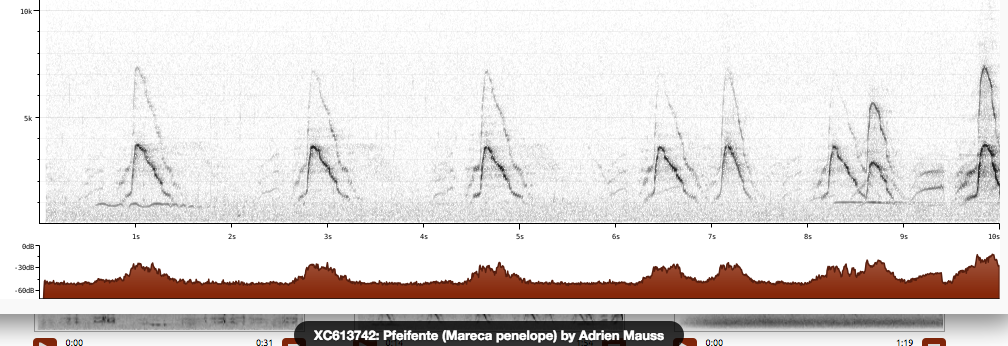 Answer
Eurasian wigeon Pfeifente von XenoCanto
♫
Answer
Dartford warbler
♫
Answer
Common whitethroat Dorngrasmücke buzzy calls.
♫
Answer
Brown thrasher
♫
Answer
Blue jay
♫
Answer
Garden warbler Gartengrasmuecke, Kaltbrunnerriet.
♫
Answer
Eurasian wigeon Pfeifente von XenoCanto
♫
Answer
Dartford warbler
♫
Answer
Common whitethroat Dorngrasmücke buzzy calls.
♫
Answer
Brown thrasher
♫
Answer
Blue jay
♫
Answer
Garden warbler Gartengrasmuecke, Kaltbrunnerriet.
♫
 Answer
Western yellow wagtail
♫
Answer
Western yellow wagtail
♫
 Answer
Red-whiskered bulbul XC776525 - Red-whiskered Bulbul - Pycnonotus jocosus pattani.
♫
Answer
Great crested grebe
♫
Answer
Red-whiskered bulbul XC776525 - Red-whiskered Bulbul - Pycnonotus jocosus pattani.
♫
Answer
Great crested grebe
♫
 Answer
Chestnut-headed bee-eater XC639690 - Chestnut-headed Bee-eater - Merops leschenaulti leschenaulti - call - Doi Inthanon National Park, Thailand.
♫
Answer
Chestnut-headed bee-eater XC639690 - Chestnut-headed Bee-eater - Merops leschenaulti leschenaulti - call - Doi Inthanon National Park, Thailand.
♫
 Answer
Common kingfisher Call from Xeno-Canto
♫
Answer
Desert lark
♫
Answer
Common kingfisher Call from Xeno-Canto
♫
Answer
Desert lark
♫
 Answer
Asian palm-swift XC642524 - Asian Palm Swift - Cypsiurus balasiensis infumatus - flight call - Vientiane, Laos.
♫
Answer
Asian palm-swift XC642524 - Asian Palm Swift - Cypsiurus balasiensis infumatus - flight call - Vientiane, Laos.
♫
 Answer
Eurasian teal Krickente Ruf von XenoCanto
♫
Answer
Eurasian collared dove Türkentaube.
♫
Answer
Tree pipit
♫
Answer
Eurasian teal Krickente Ruf von XenoCanto
♫
Answer
Eurasian collared dove Türkentaube.
♫
Answer
Tree pipit
♫
 Answer
Common cuckoo XC801215 - Common Cuckoo - Cuculus canorus.
♫
Answer
Eurasian wryneck Wendehals, bolle magadino.
♫
Answer
Eurasian magpie
♫
Answer
Stonechat
♫
Answer
Eurasian siskin
♫
Answer
Alpine chough
♫
Answer
Tufted titmouse
♫
Answer
Common cuckoo XC801215 - Common Cuckoo - Cuculus canorus.
♫
Answer
Eurasian wryneck Wendehals, bolle magadino.
♫
Answer
Eurasian magpie
♫
Answer
Stonechat
♫
Answer
Eurasian siskin
♫
Answer
Alpine chough
♫
Answer
Tufted titmouse
♫
 Answer
Long-tailed tit Flight call from XenoCanto
♫
Answer
Common reed bunting
♫
Answer
Long-tailed tit Flight call from XenoCanto
♫
Answer
Common reed bunting
♫
 Answer
Eurasian green woodpecker
♫
Answer
Black kite
♫
Answer
House finch
♫
Answer
Great reed warbler Drosselrohrsänger.
♫
Answer
Smoky-brown woodpecker
♫
Answer
Eastern meadowlark
♫
Answer
Eurasian green woodpecker
♫
Answer
Black kite
♫
Answer
House finch
♫
Answer
Great reed warbler Drosselrohrsänger.
♫
Answer
Smoky-brown woodpecker
♫
Answer
Eastern meadowlark
♫
 Answer
Hawfinch
♫
Answer
Common buzzard
♫
Answer
Hawfinch
♫
Answer
Common buzzard
♫
 Answer
Eurasian treecreeper XC206282 Eurasian treecreeper call.
♫
Answer
White-eyed vireo
♫
Answer
Pileated woodpecker
♫
Answer
Eurasian treecreeper XC206282 Eurasian treecreeper call.
♫
Answer
White-eyed vireo
♫
Answer
Pileated woodpecker
♫
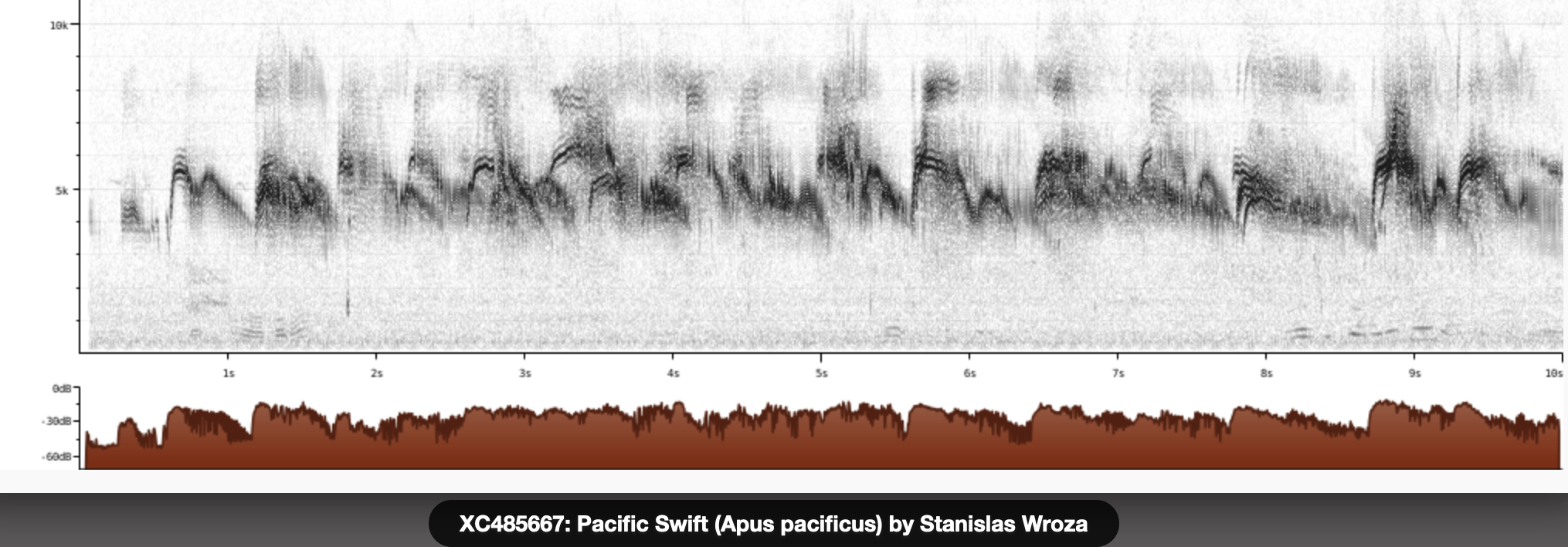 Answer
Pacific swift XC485667 - Pacific Swift - Apus pacificus - flight call, Buryatia, Russian Federation.
♫
Answer
Pacific swift XC485667 - Pacific Swift - Apus pacificus - flight call, Buryatia, Russian Federation.
♫
 Answer
Purple heron XC878038 - Purple Heron - Ardea purpurea manilensis - flight call - Nonthaburi, Thailand.
♫
Answer
Blue rock-thrush
♫
Answer
Mourning dove
♫
Answer
Purple heron XC878038 - Purple Heron - Ardea purpurea manilensis - flight call - Nonthaburi, Thailand.
♫
Answer
Blue rock-thrush
♫
Answer
Mourning dove
♫
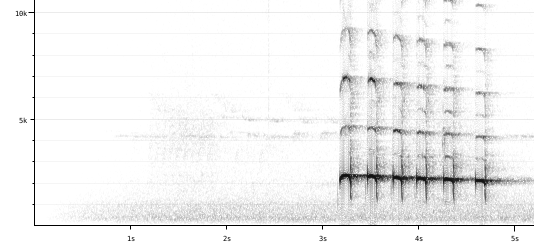 Answer
Grey-headed woodpecker
♫
Answer
Great crested flycatcher
♫
Answer
Lesser whitethroat
♫
Answer
Northern wheatear
♫
Answer
Corn bunting
♫
Answer
Meadow pipit
♫
Answer
Grey-headed woodpecker
♫
Answer
Great crested flycatcher
♫
Answer
Lesser whitethroat
♫
Answer
Northern wheatear
♫
Answer
Corn bunting
♫
Answer
Meadow pipit
♫
 Answer
Eurasian tree sparrow XC558751-Feldsperling.
♫
Answer
Eurasian skylark
♫
Answer
Eurasian tree sparrow XC558751-Feldsperling.
♫
Answer
Eurasian skylark
♫
 Answer
Eurasian sparrowhawk XC818384 - Eurasian Sparrowhawk - Accipiter nisus - call, Brandenburg, Germany.
♫
Answer
Red crossbill
♫
Answer
Eurasian sparrowhawk XC818384 - Eurasian Sparrowhawk - Accipiter nisus - call, Brandenburg, Germany.
♫
Answer
Red crossbill
♫
 Answer
European goldfinch Xeno-Canto recording Adult call recorded in the UK.
♫
Answer
European goldfinch Xeno-Canto recording Adult call recorded in the UK.
♫
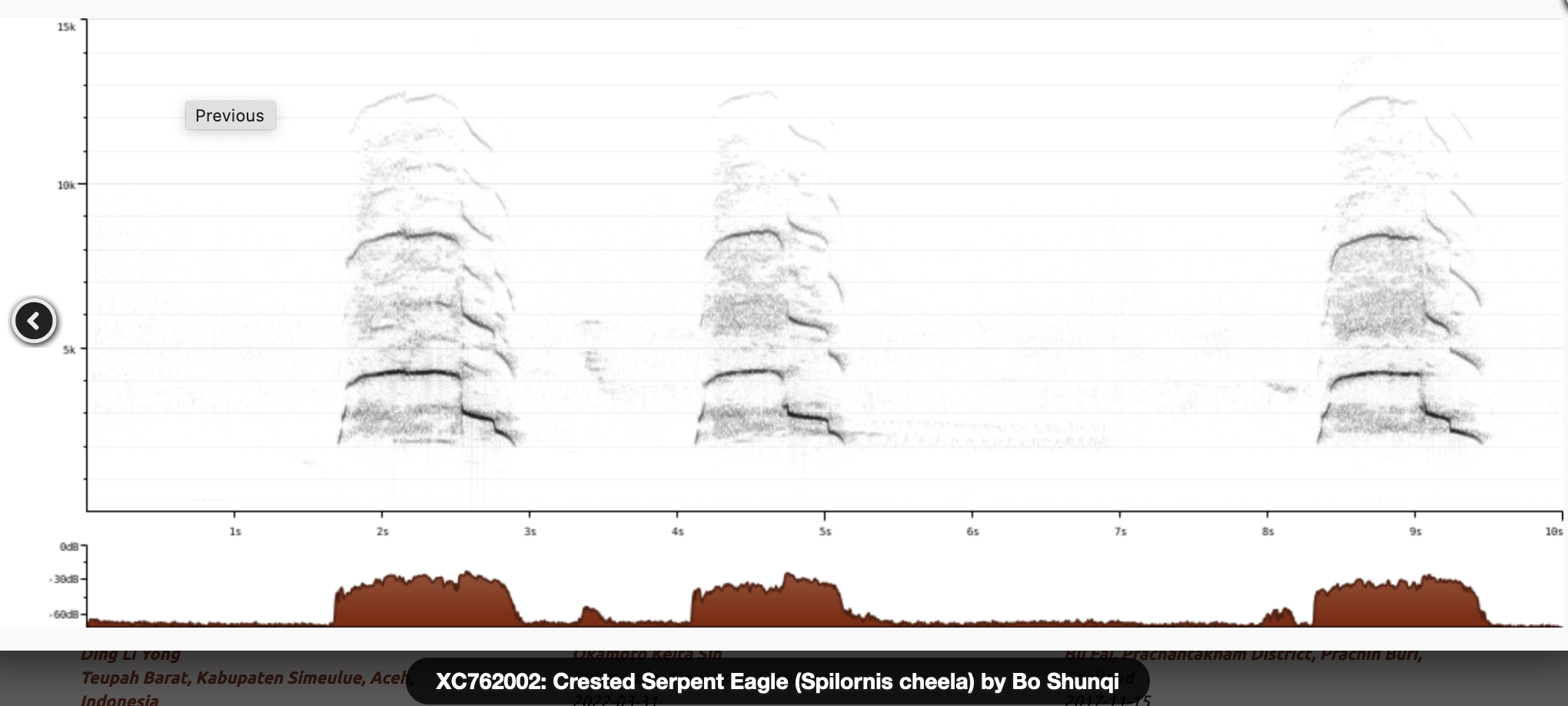 Answer
Crested serpent eagle XC762002 - Crested Serpent Eagle - Spilornis cheela - alarm call, Shanghai Zoo, Shanghai Shi, China.
♫
Answer
Crested serpent eagle XC762002 - Crested Serpent Eagle - Spilornis cheela - alarm call, Shanghai Zoo, Shanghai Shi, China.
♫
 Answer
Wreathed hornbill XC292842 - Wreathed Hornbill - Rhyticeros undulatus - barking call - Borneo, Malaysia.
♫
Answer
House sparrow
♫
Answer
Osprey 2023-10-12 15 55 surprising sound of an osprey.
♫
Answer
Pied avocet
♫
Answer
White-throated sparrow
♫
Answer
Eurasian blue tit
♫
Answer
Wreathed hornbill XC292842 - Wreathed Hornbill - Rhyticeros undulatus - barking call - Borneo, Malaysia.
♫
Answer
House sparrow
♫
Answer
Osprey 2023-10-12 15 55 surprising sound of an osprey.
♫
Answer
Pied avocet
♫
Answer
White-throated sparrow
♫
Answer
Eurasian blue tit
♫
 Answer
Great spotted woodpecker Great spotted woodpecker call
♫
Answer
Great spotted woodpecker Great spotted woodpecker call
♫
 Answer
Great egret XC751146 - Great Egret - Ardea alba - call and flight call - Shanghai, China.
♫
Answer
American robin
♫
Answer
Common tern
♫
Answer
Zitting cisticola
♫
Answer
Great egret XC751146 - Great Egret - Ardea alba - call and flight call - Shanghai, China.
♫
Answer
American robin
♫
Answer
Common tern
♫
Answer
Zitting cisticola
♫
 Answer
Eurasian bullfinch
♫
Answer
Melodious warbler
♫
Answer
Great-tailed grackle
♫
Answer
Cetti's warbler
♫
Answer
Common nightingale
♫
Answer
Eurasian bullfinch
♫
Answer
Melodious warbler
♫
Answer
Great-tailed grackle
♫
Answer
Cetti's warbler
♫
Answer
Common nightingale
♫
 Answer
Common firecrest (alternate)
♫
Answer
Common firecrest (alternate)
♫
 Answer
Great tit Call from Xeno-Canto Illustrates higher 'wheat' before the 'chuck-a-chuck'
Answer
Great tit Call from Xeno-Canto Illustrates higher 'wheat' before the 'chuck-a-chuck'